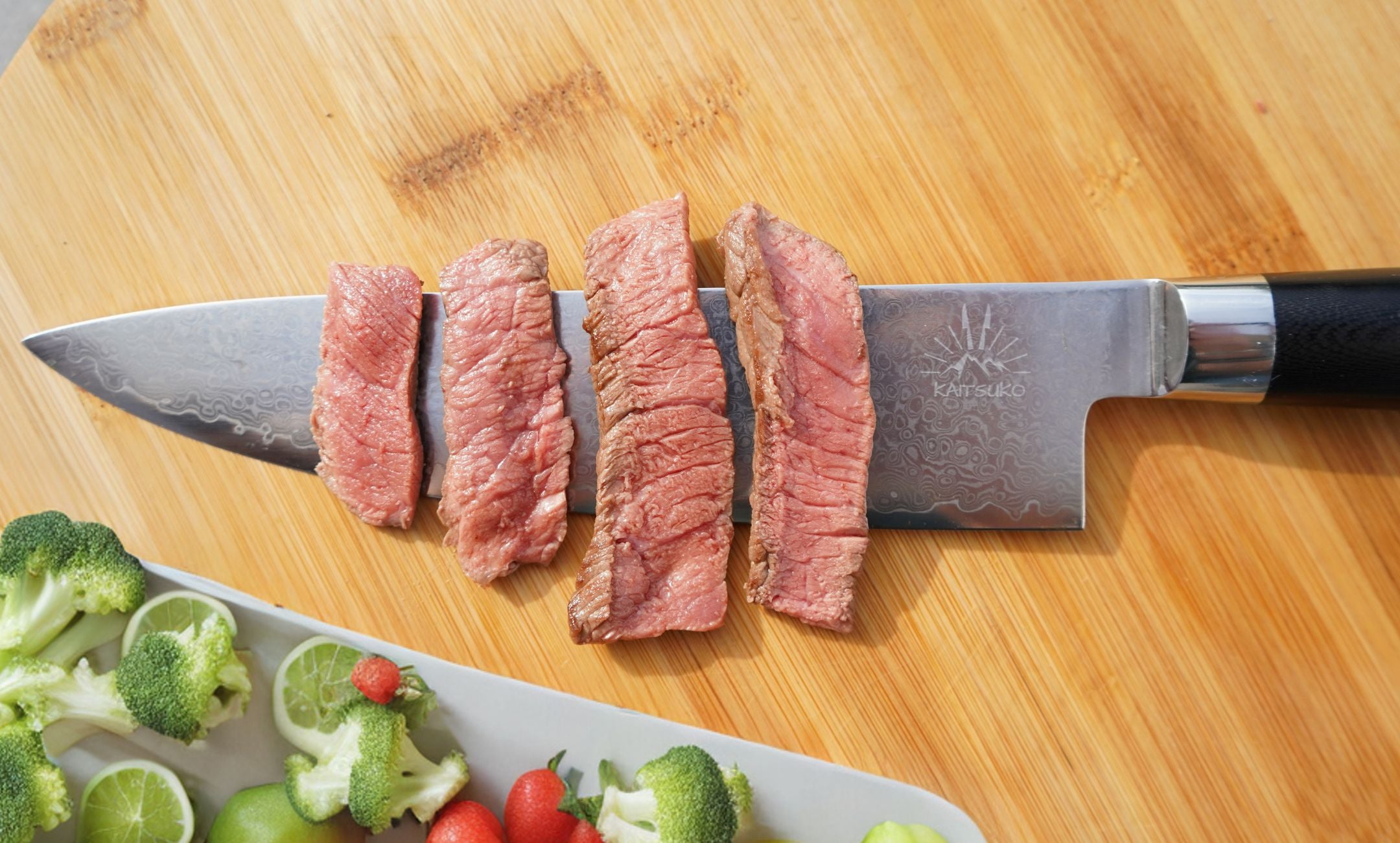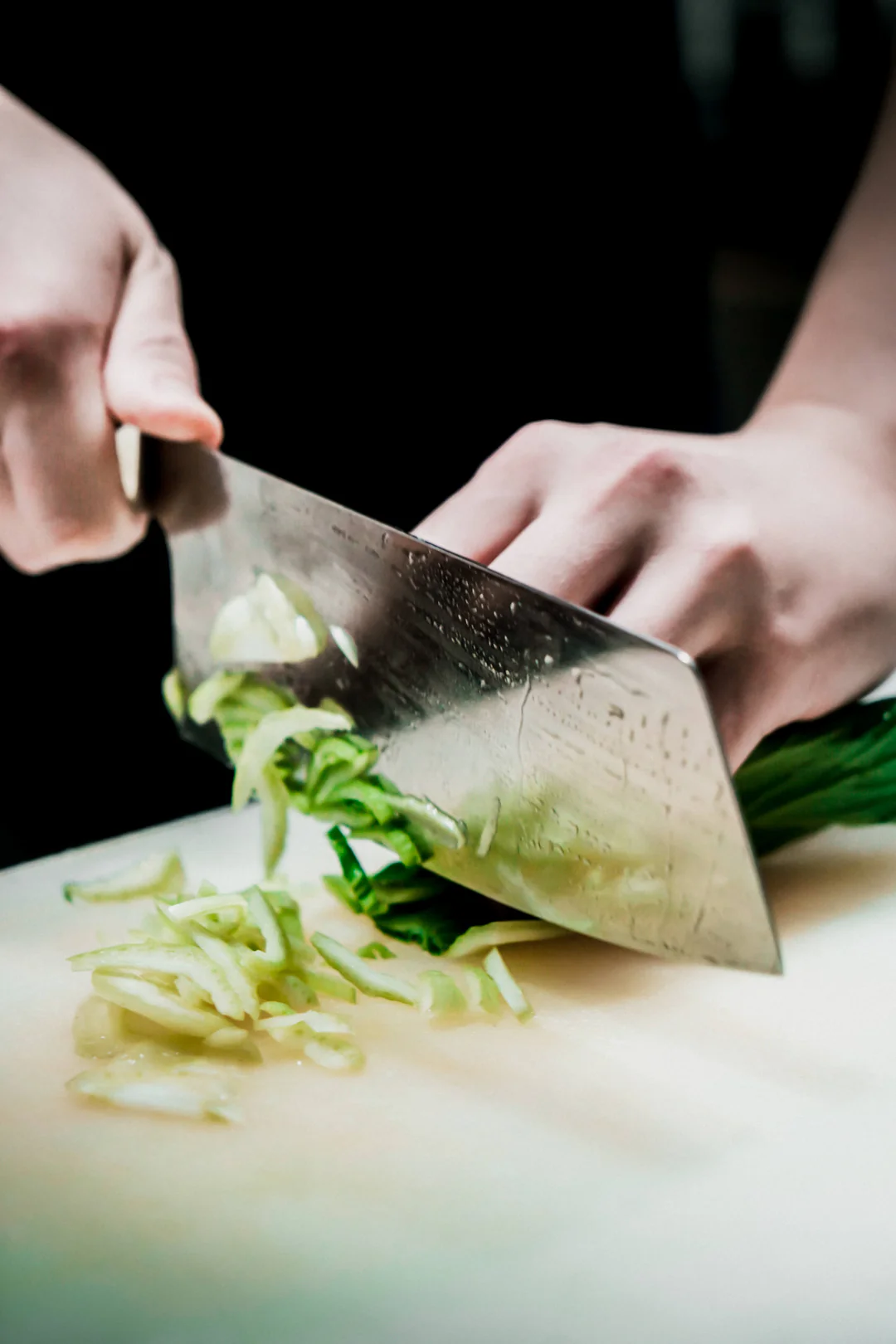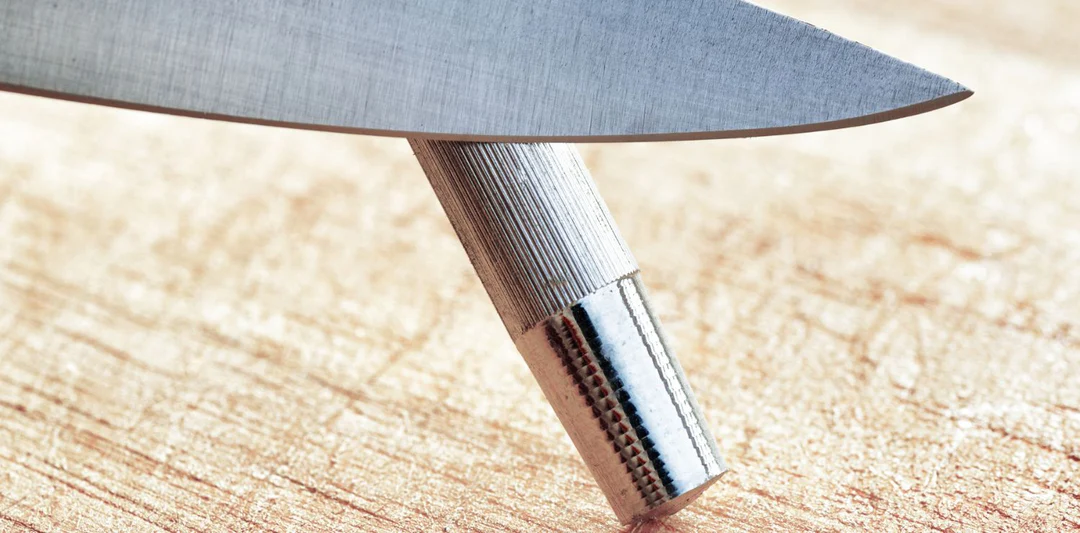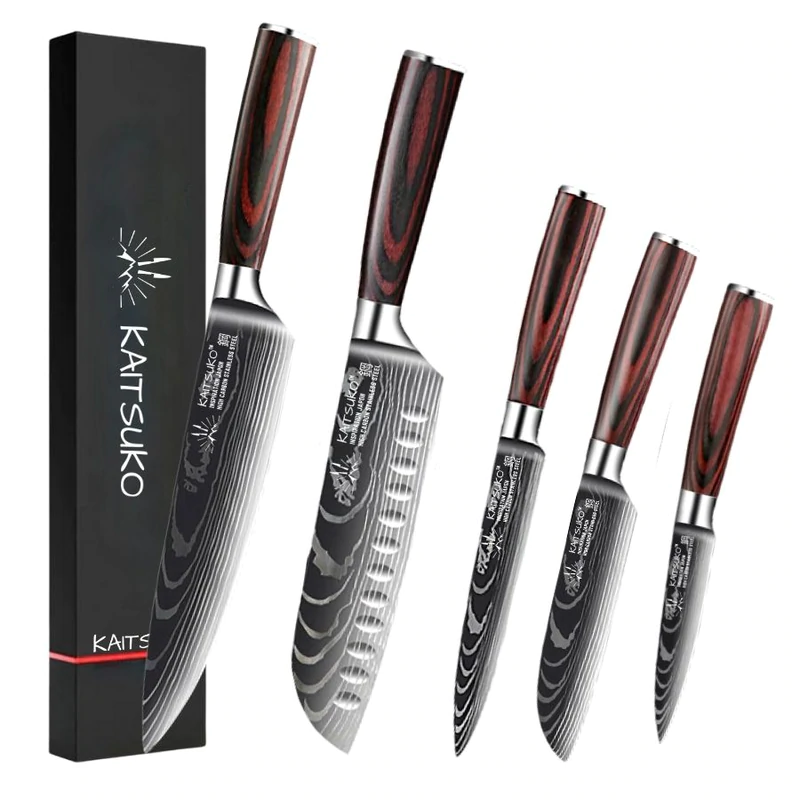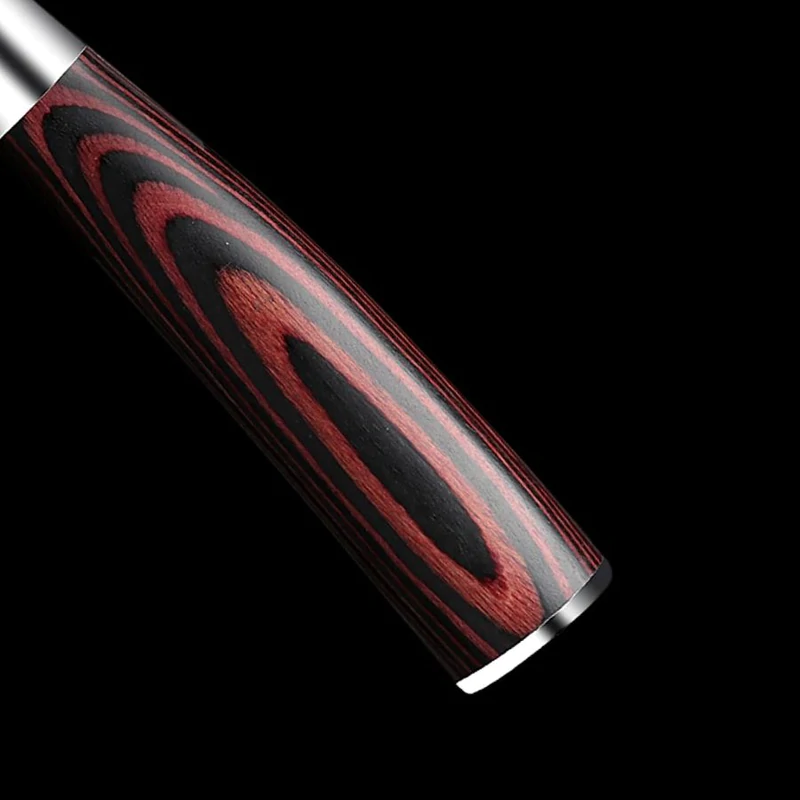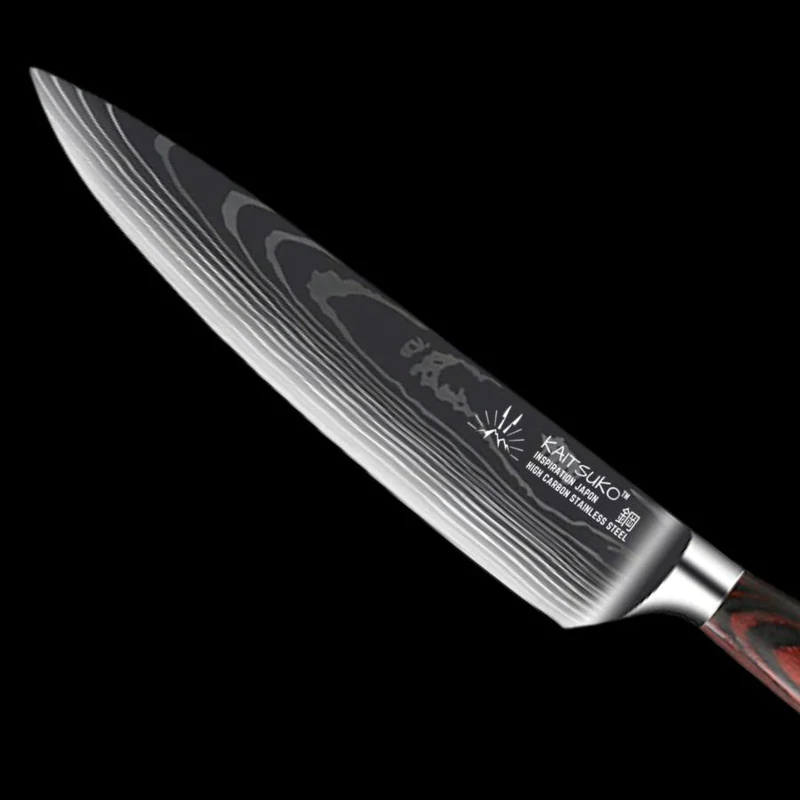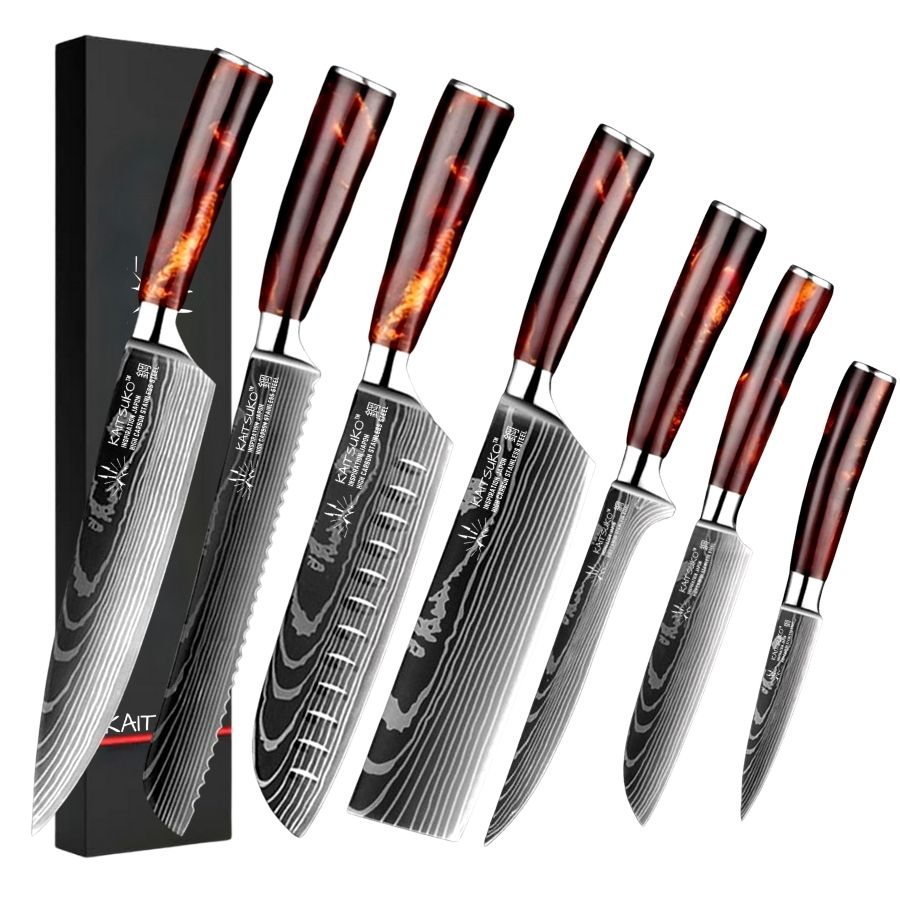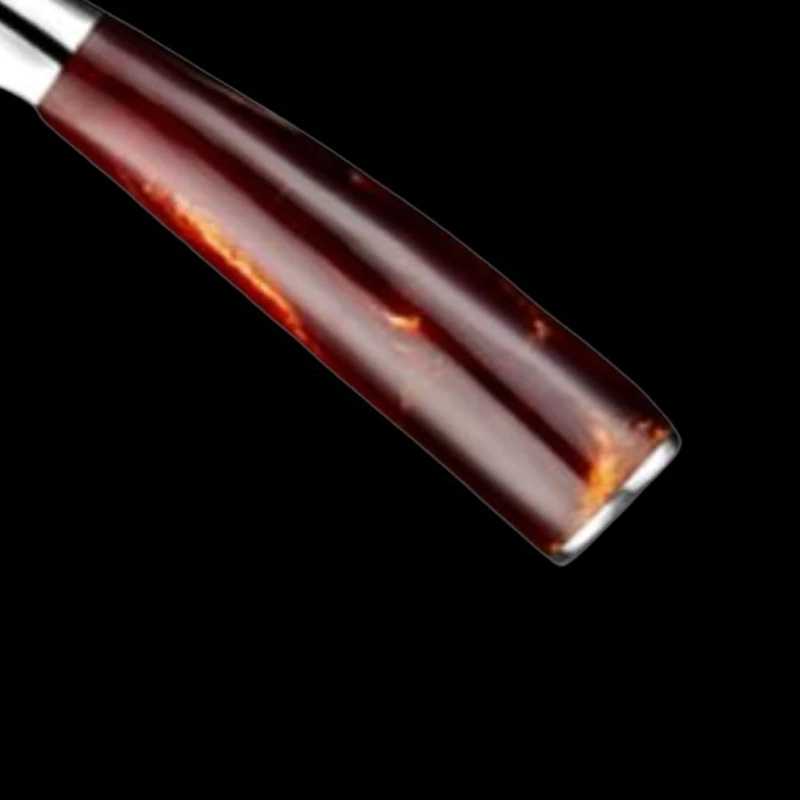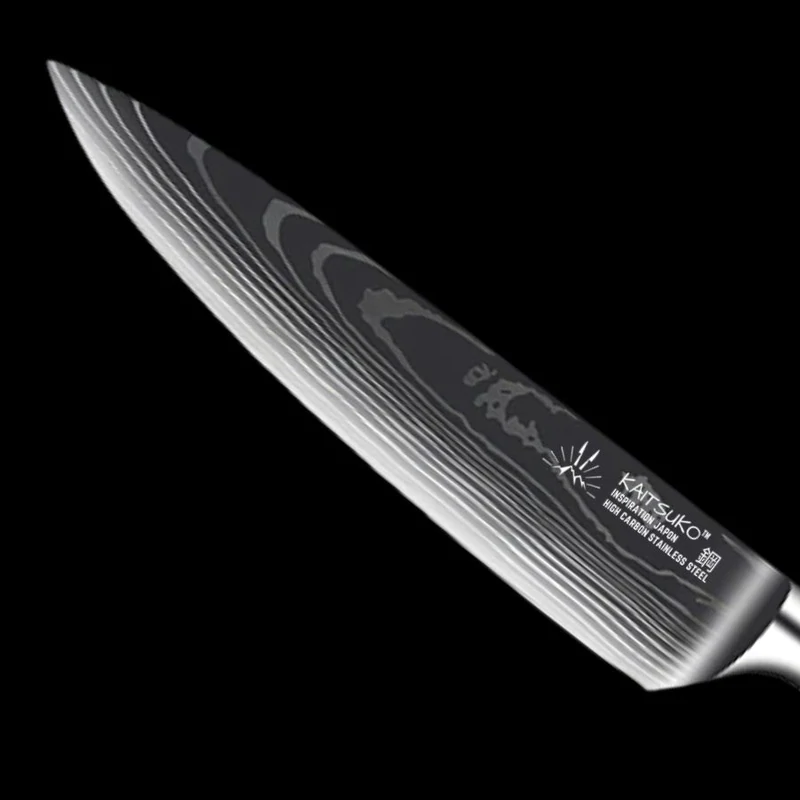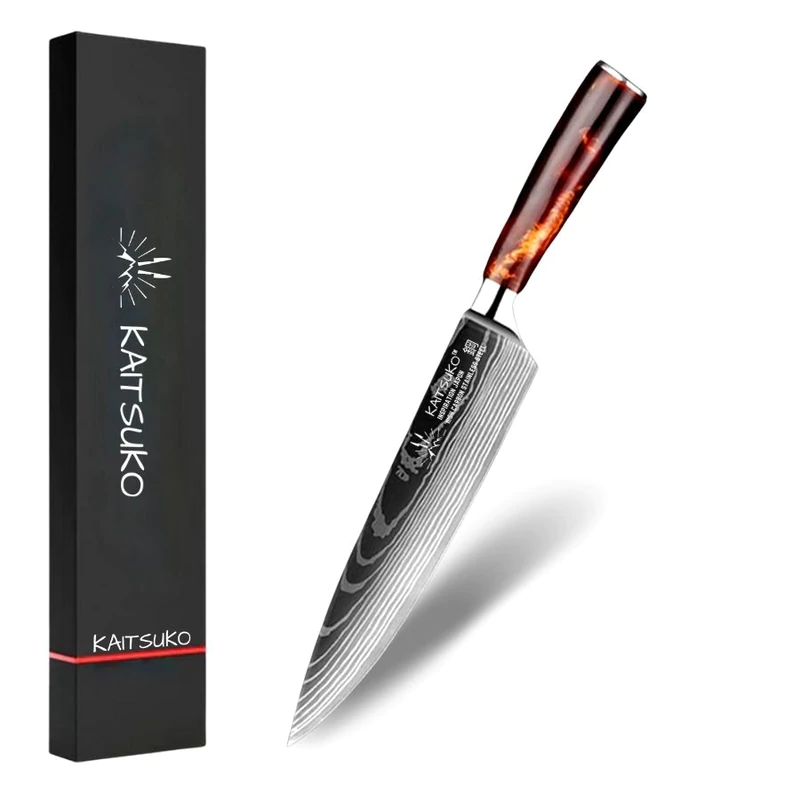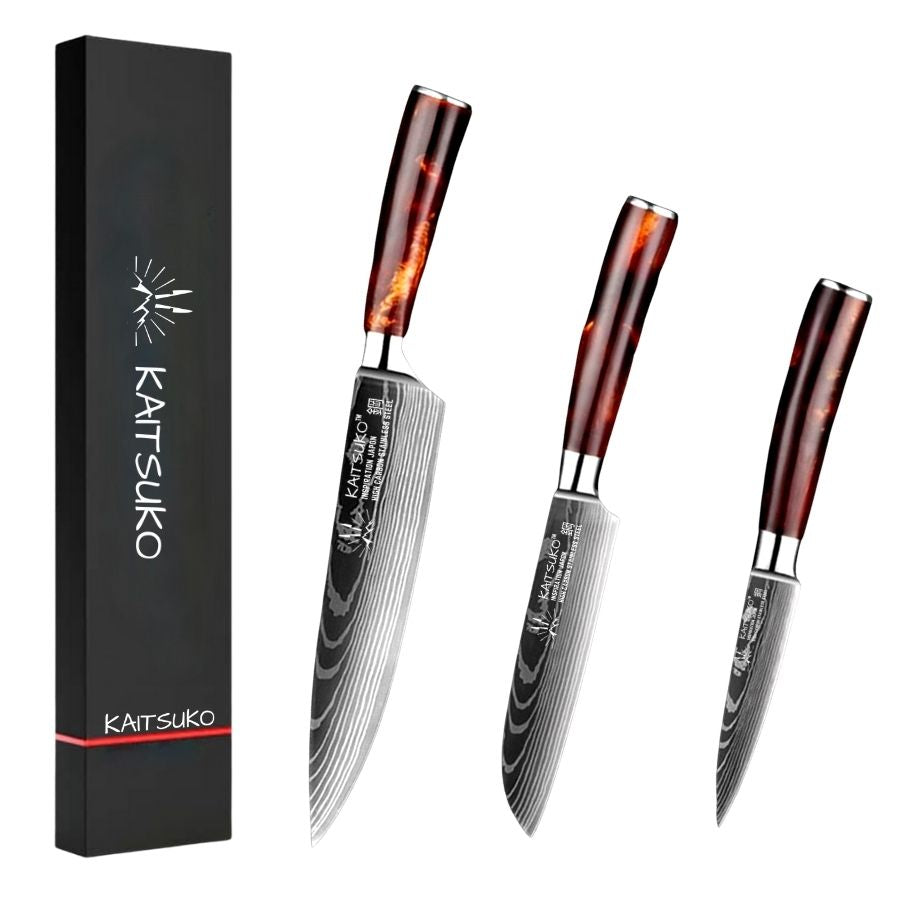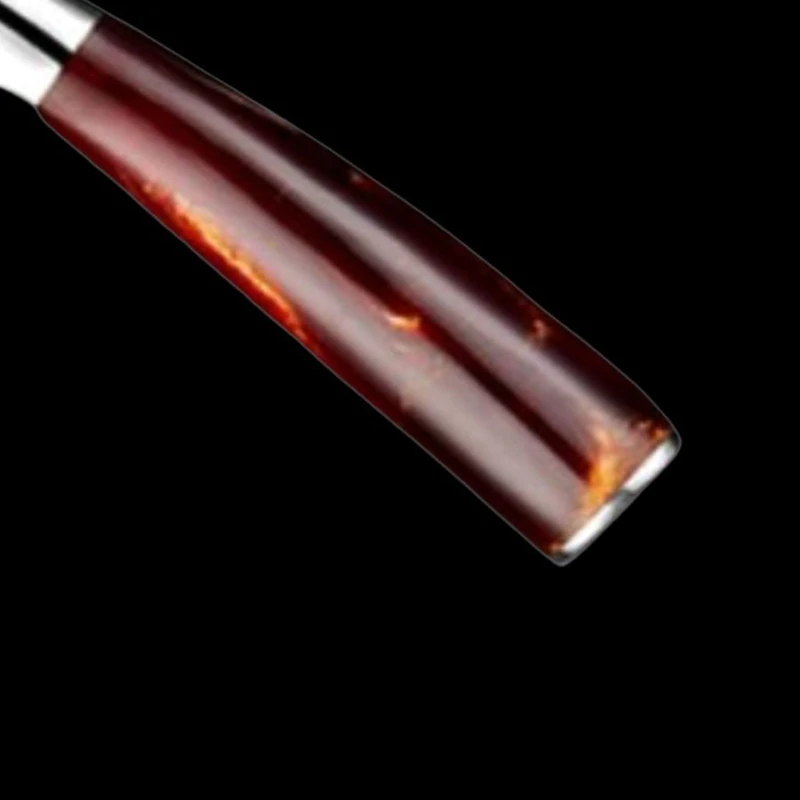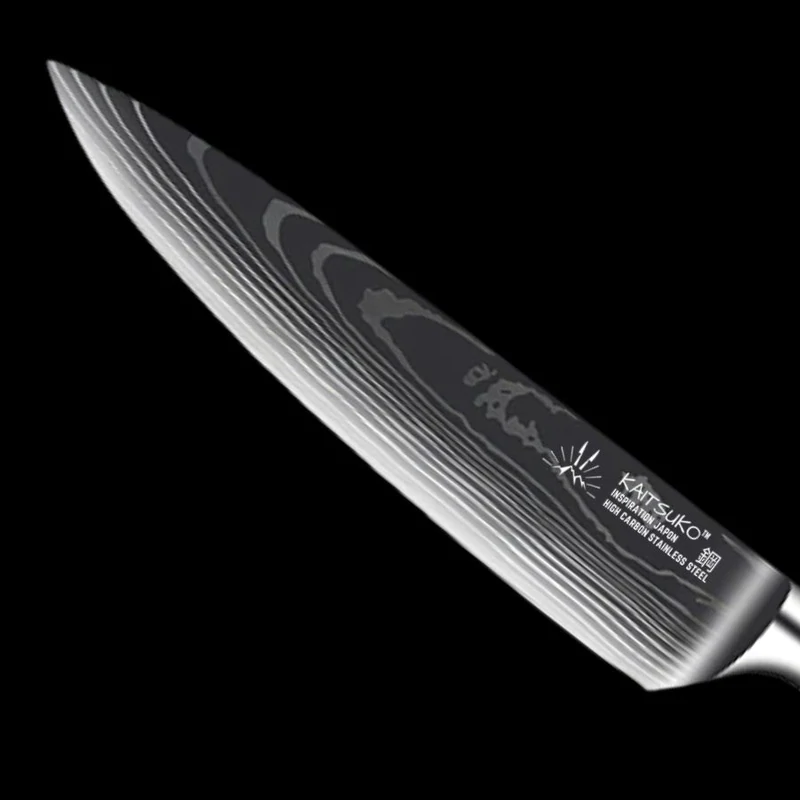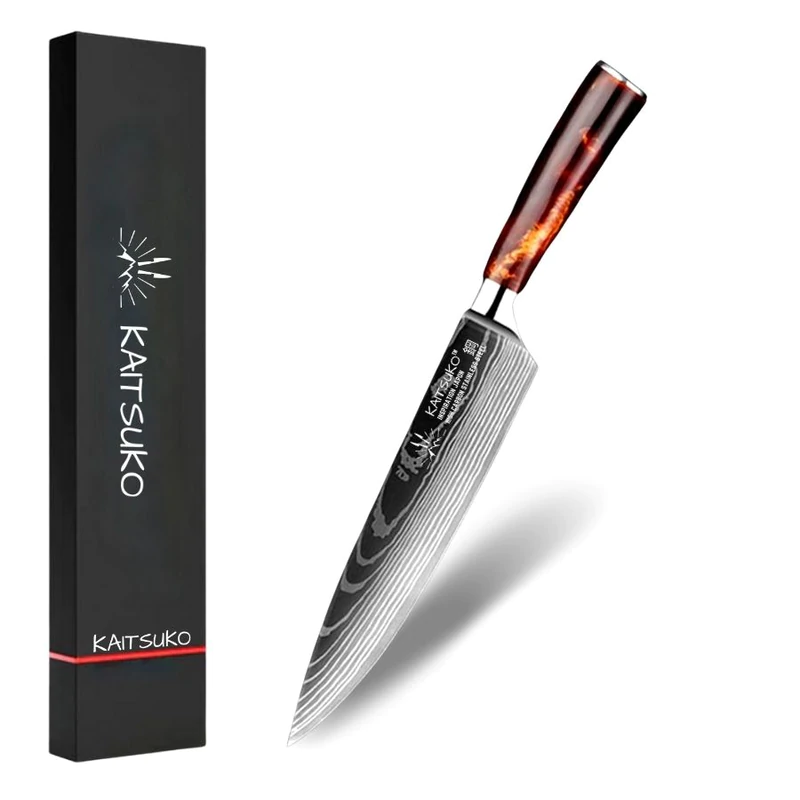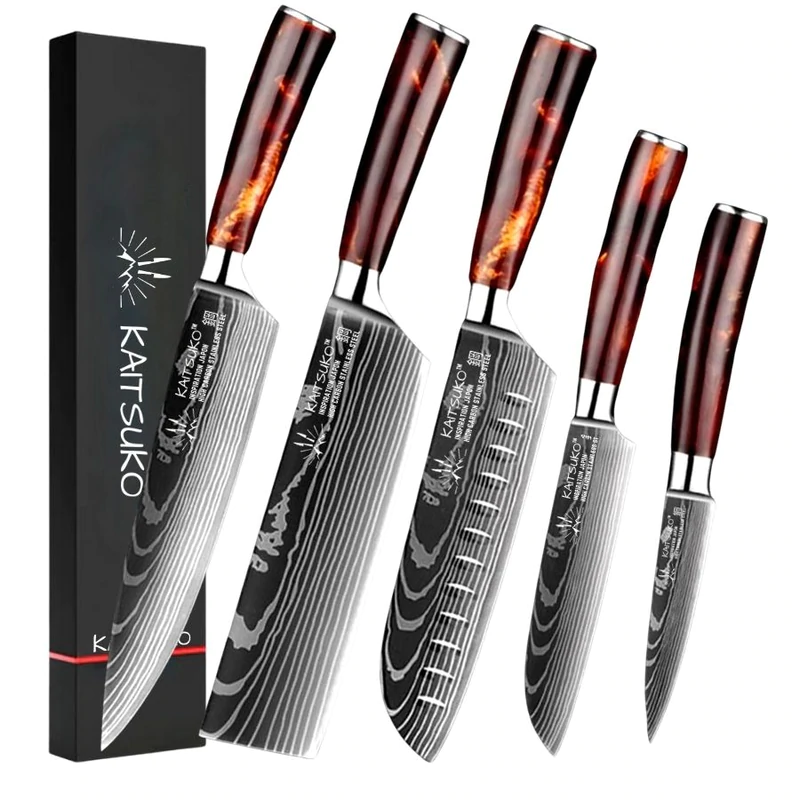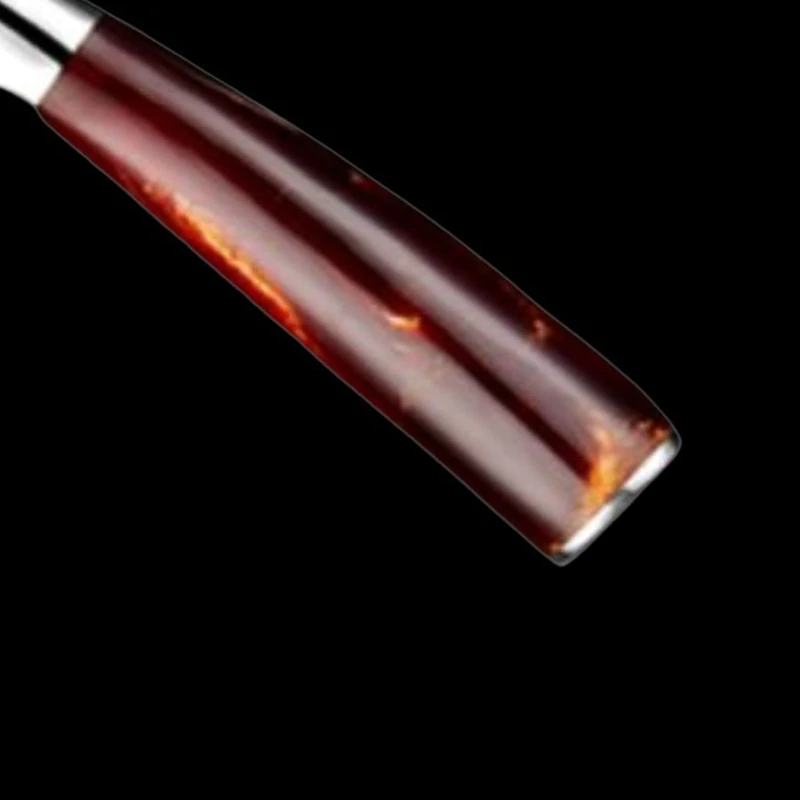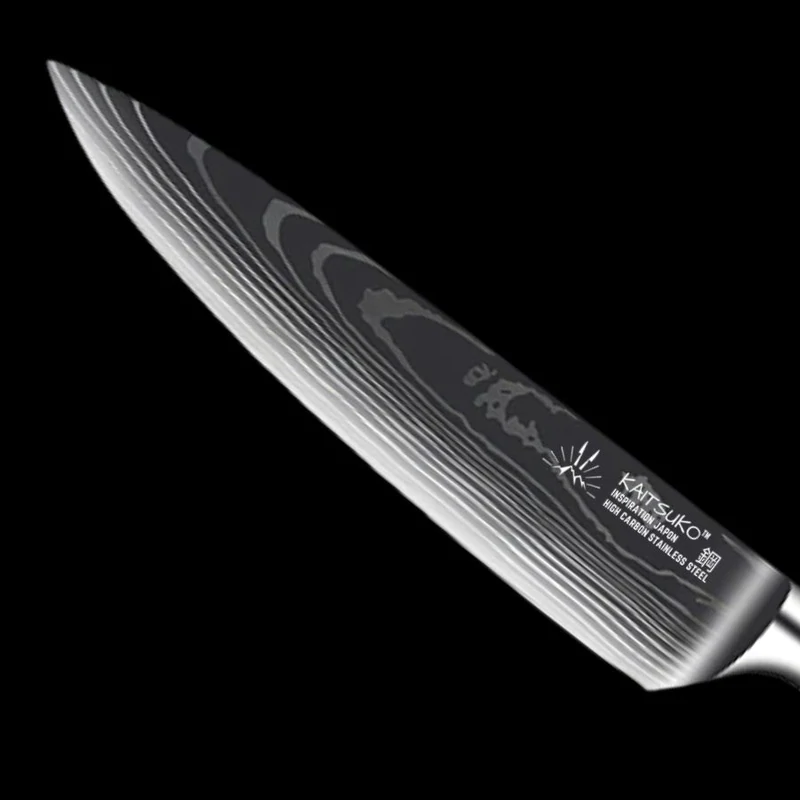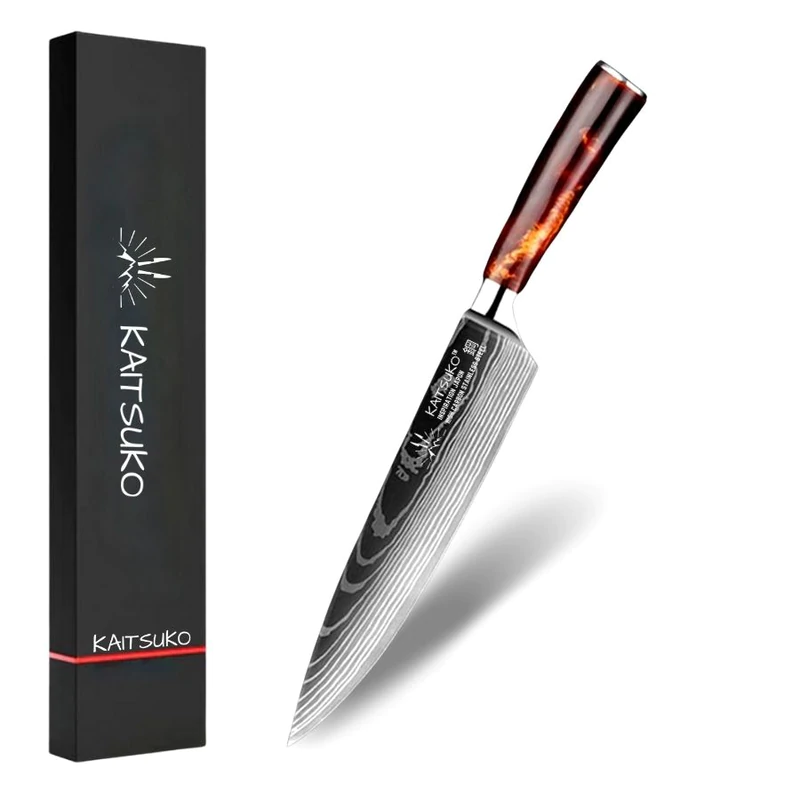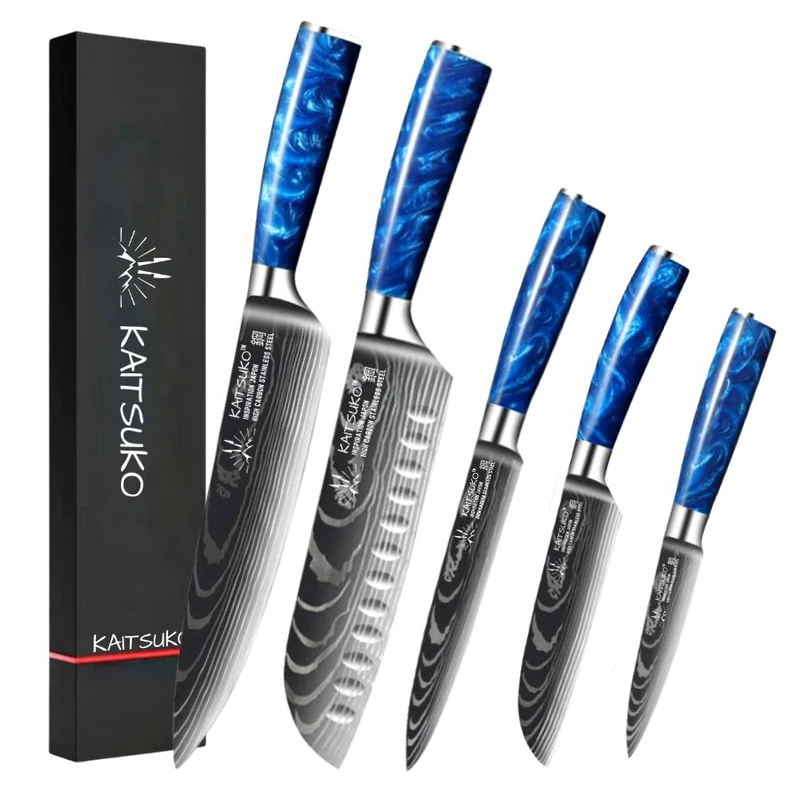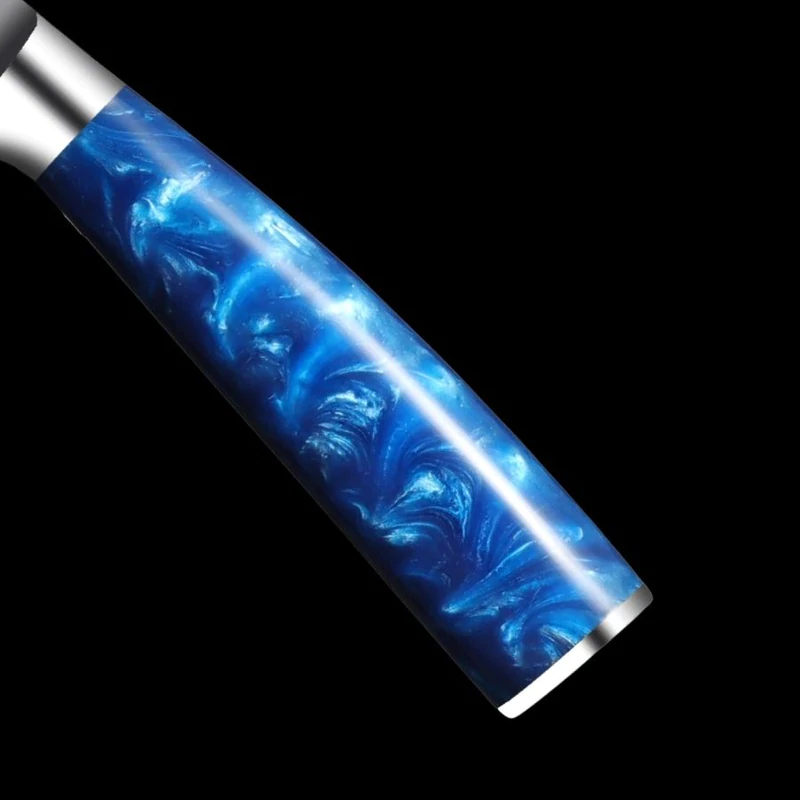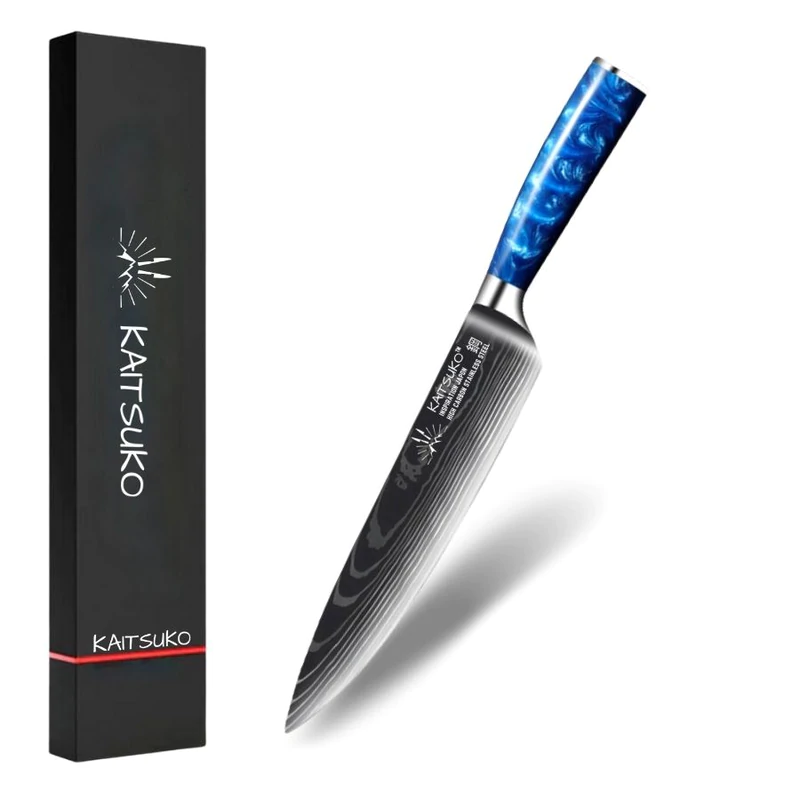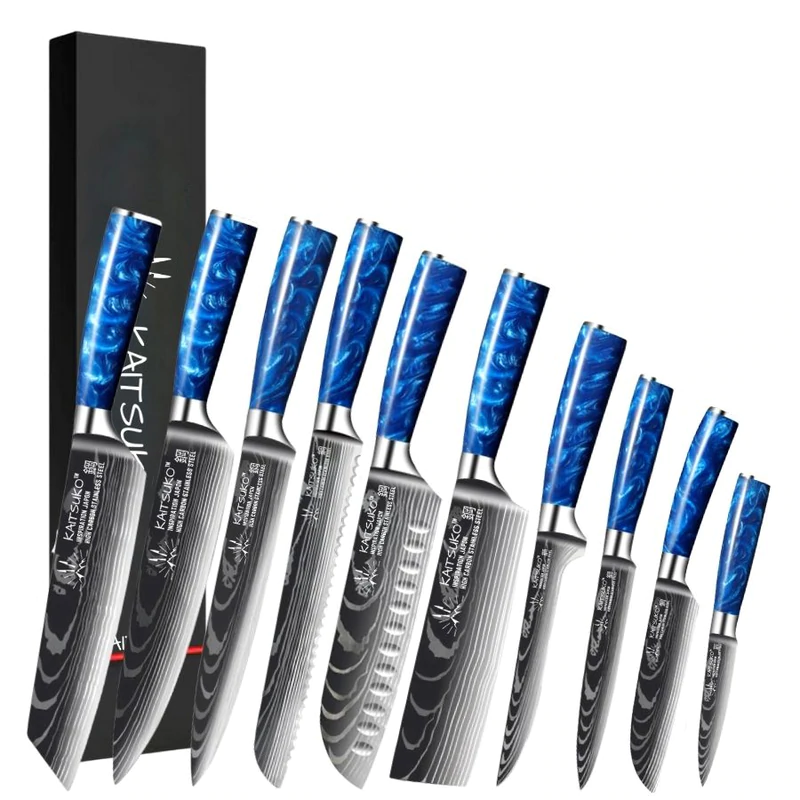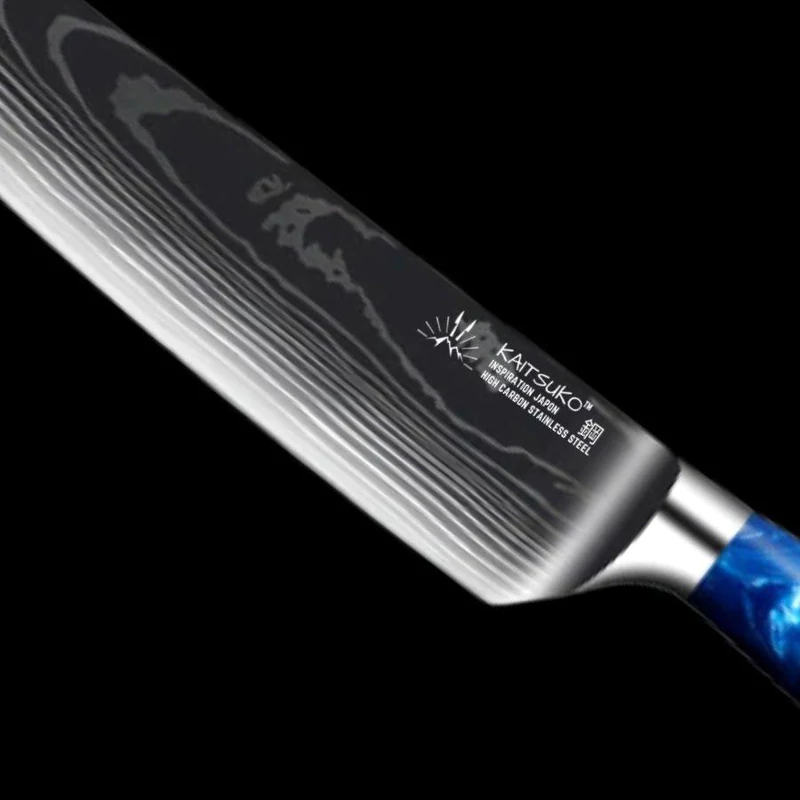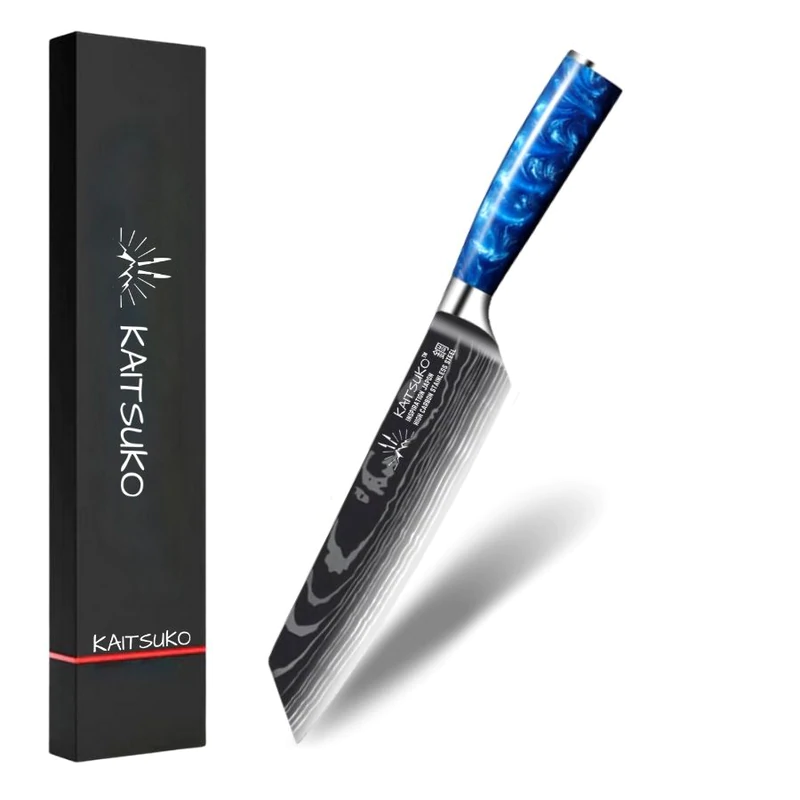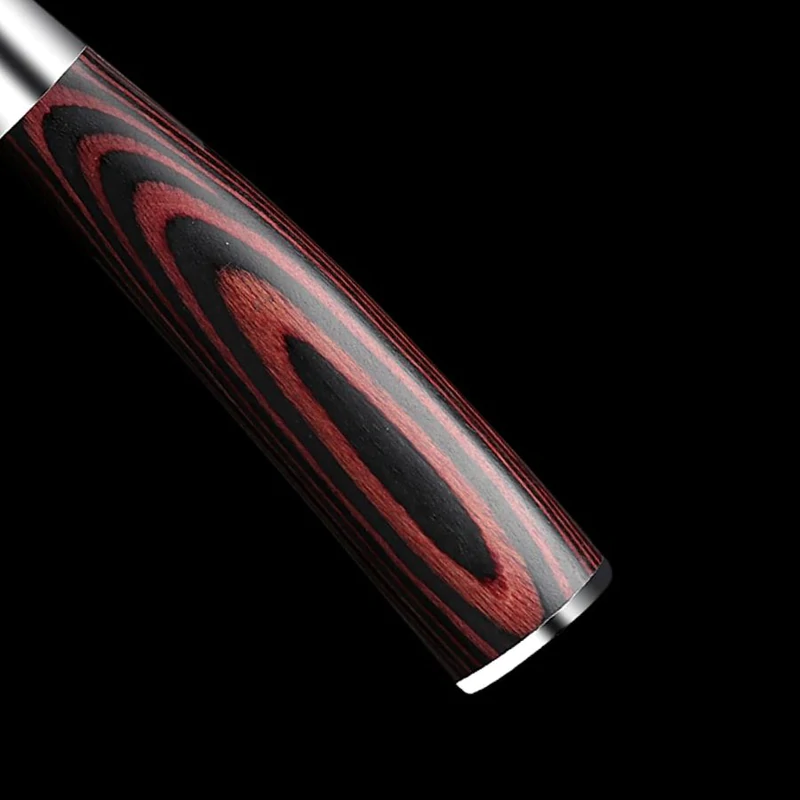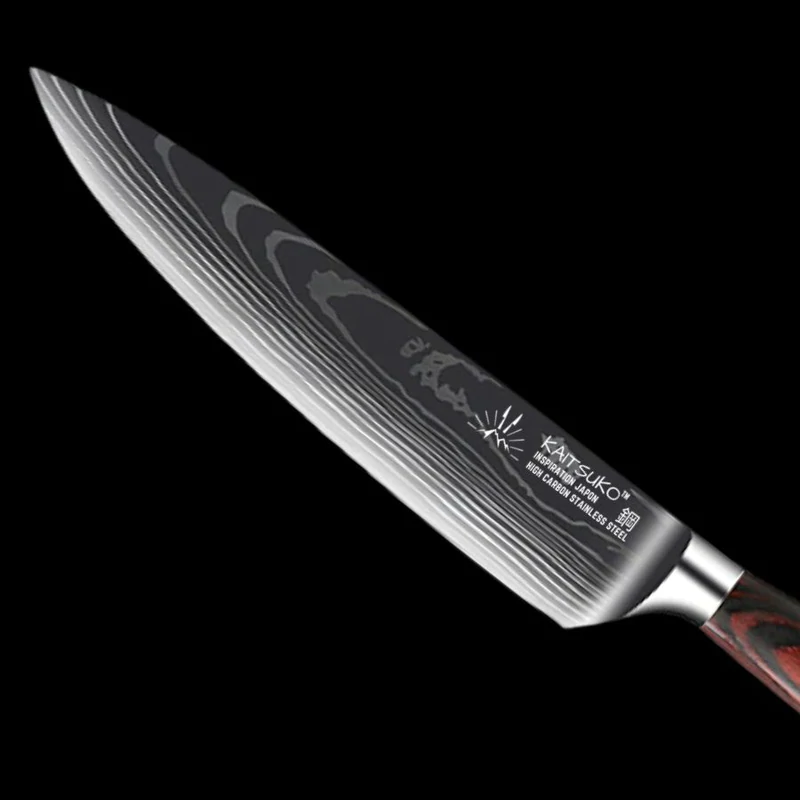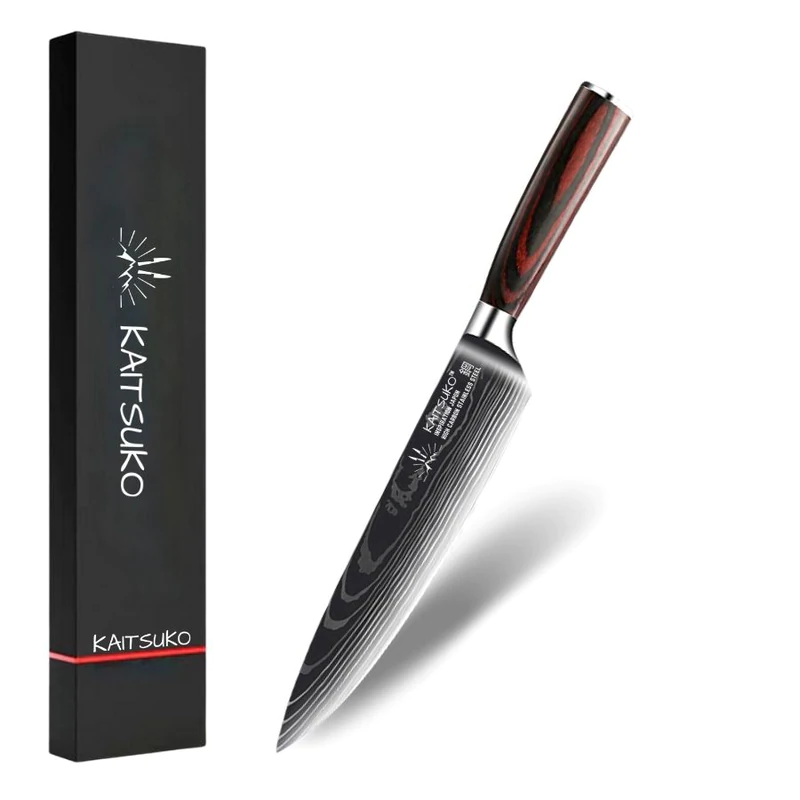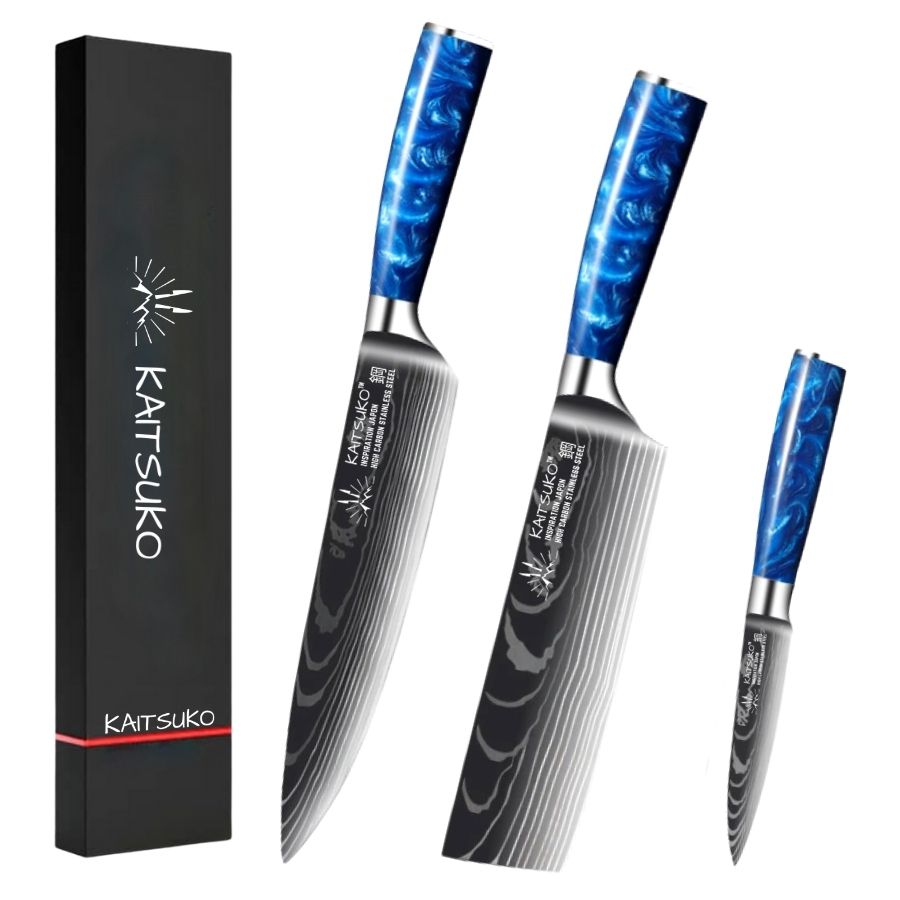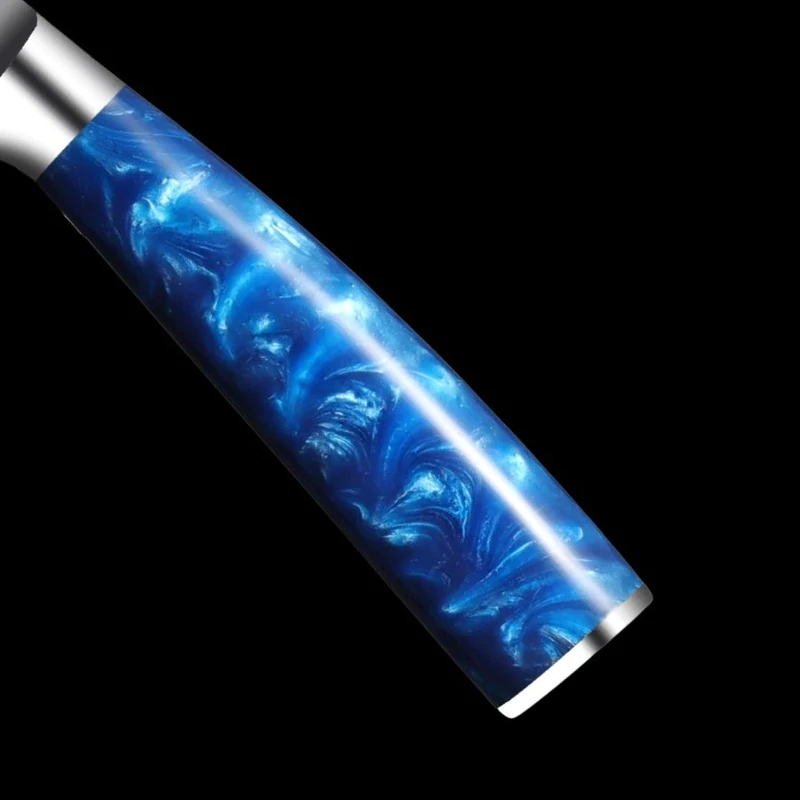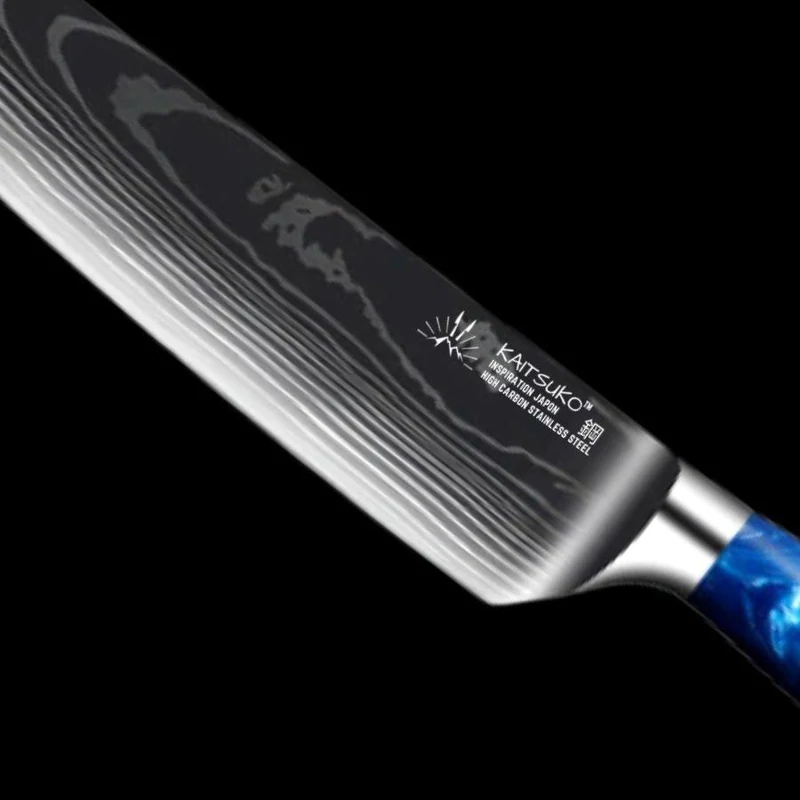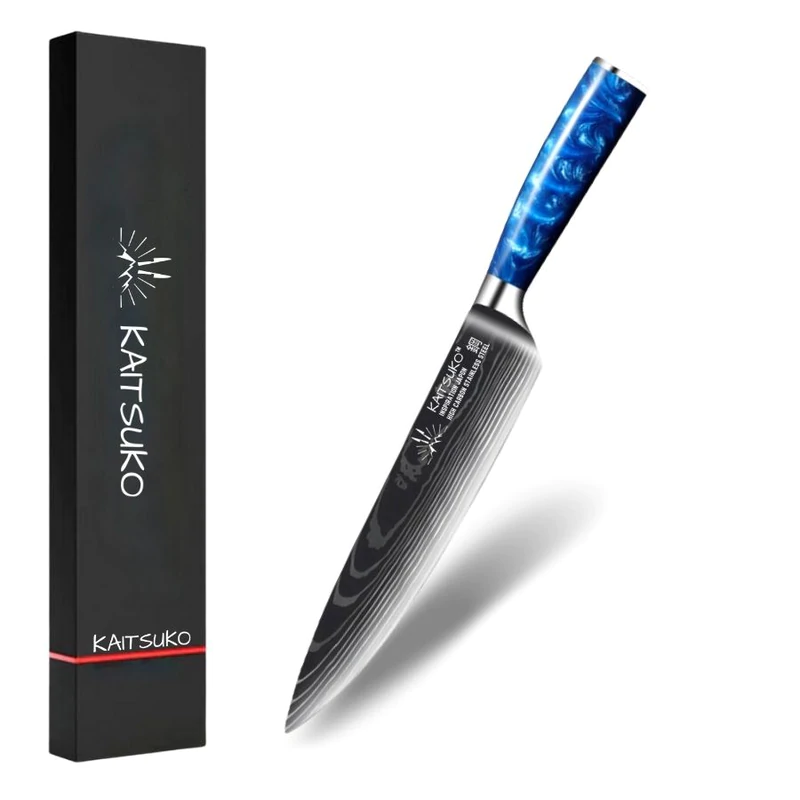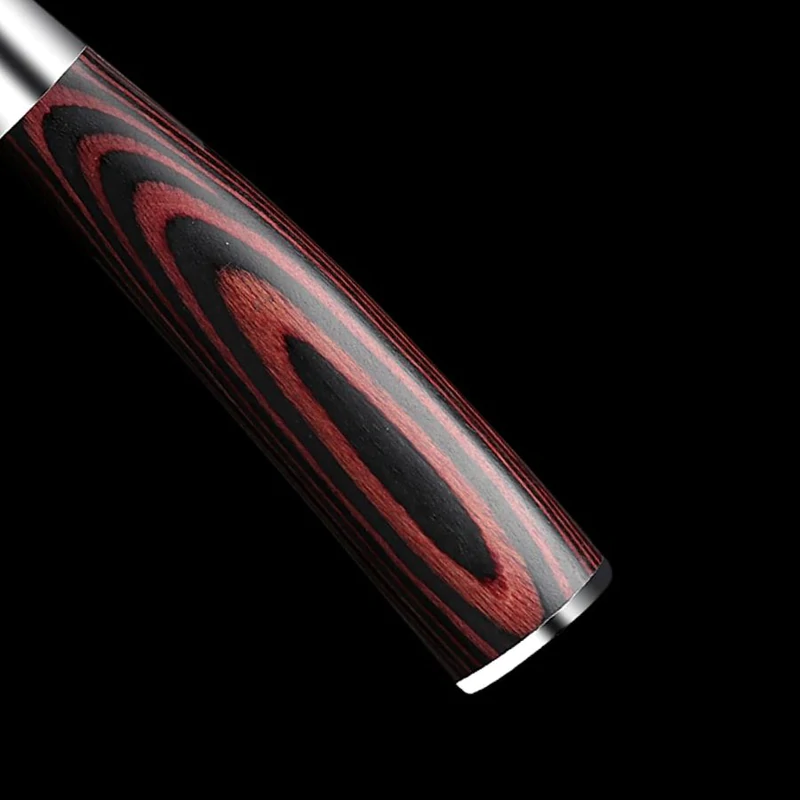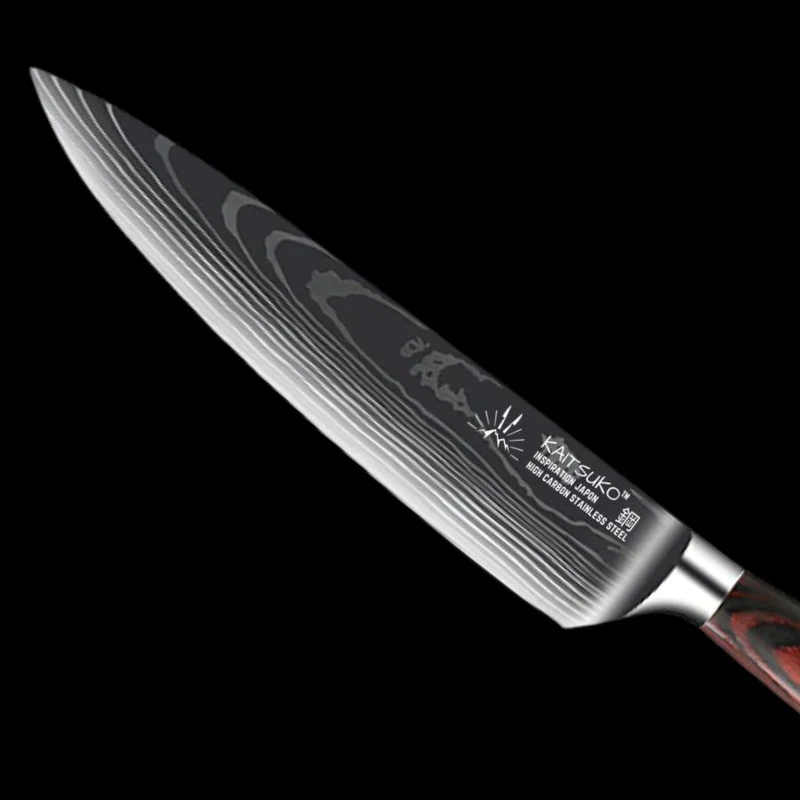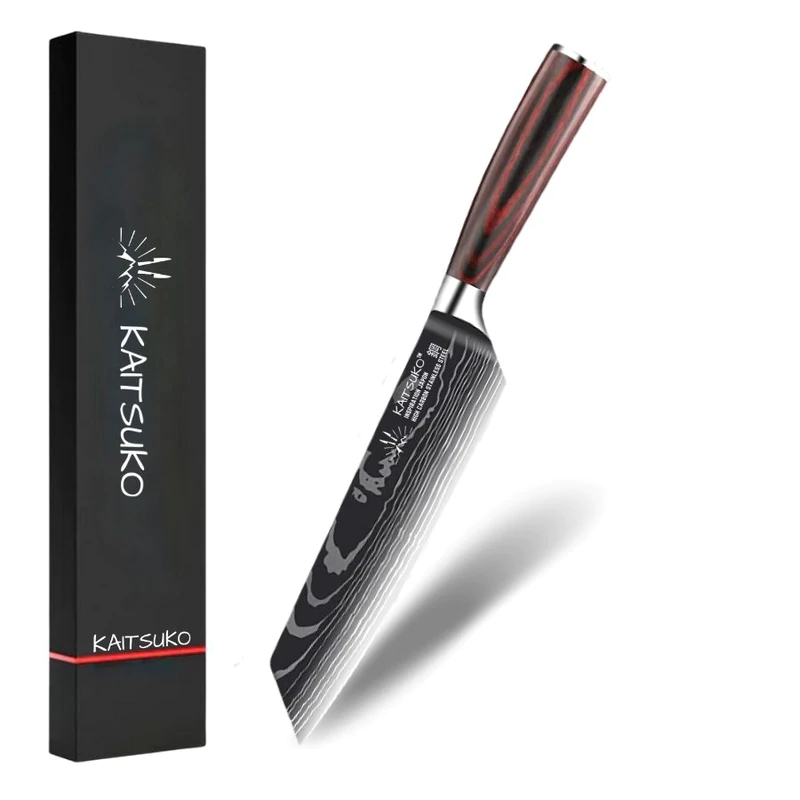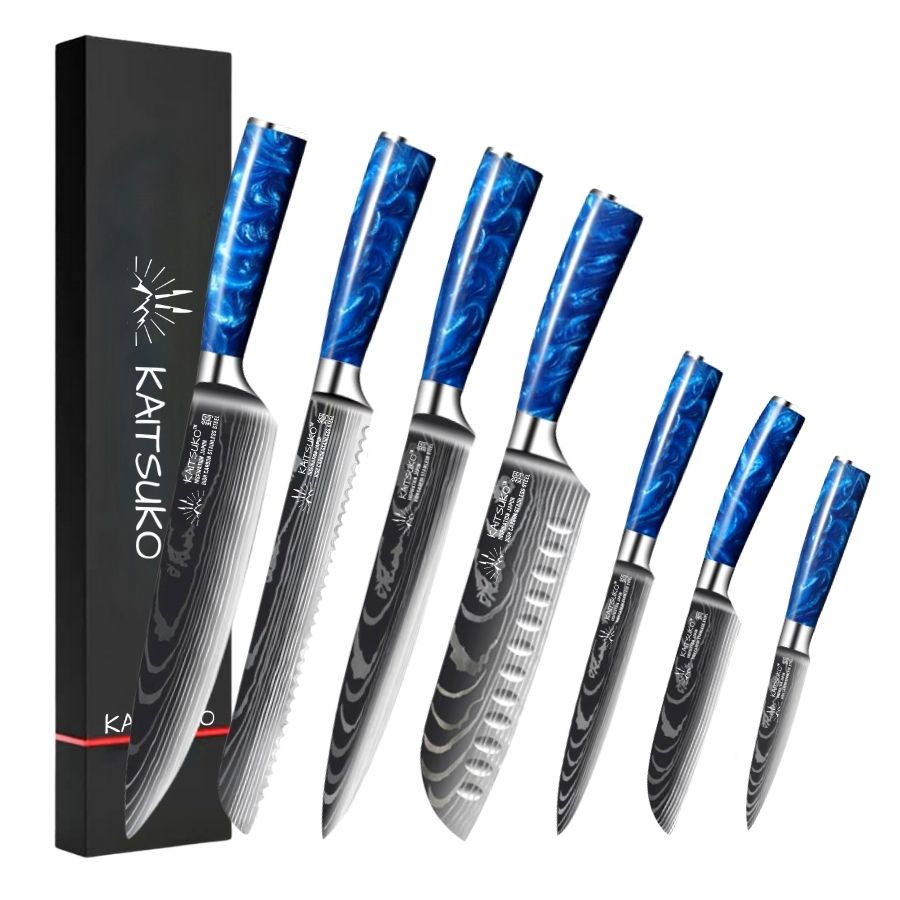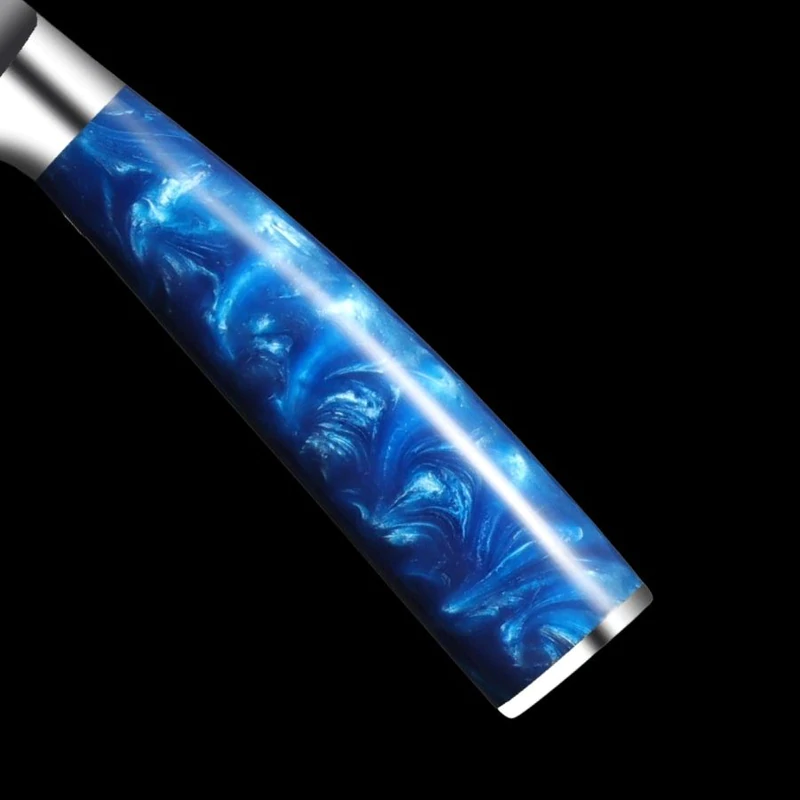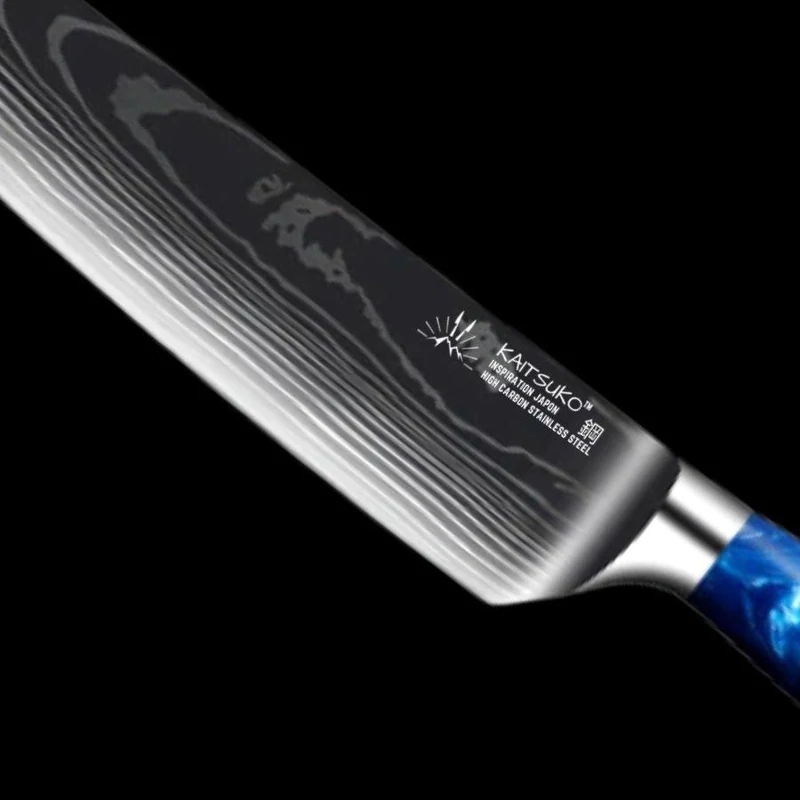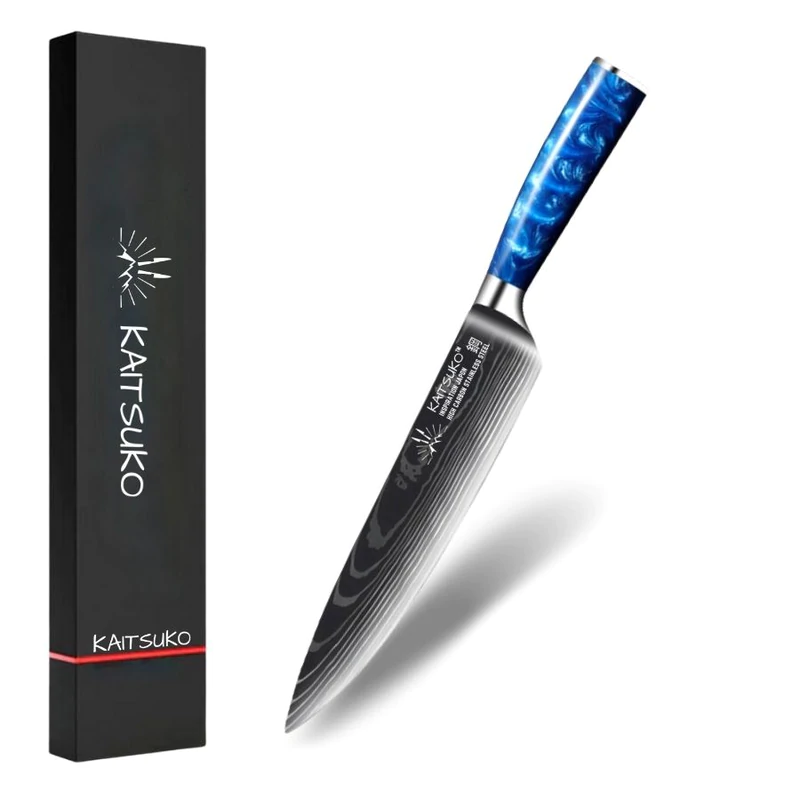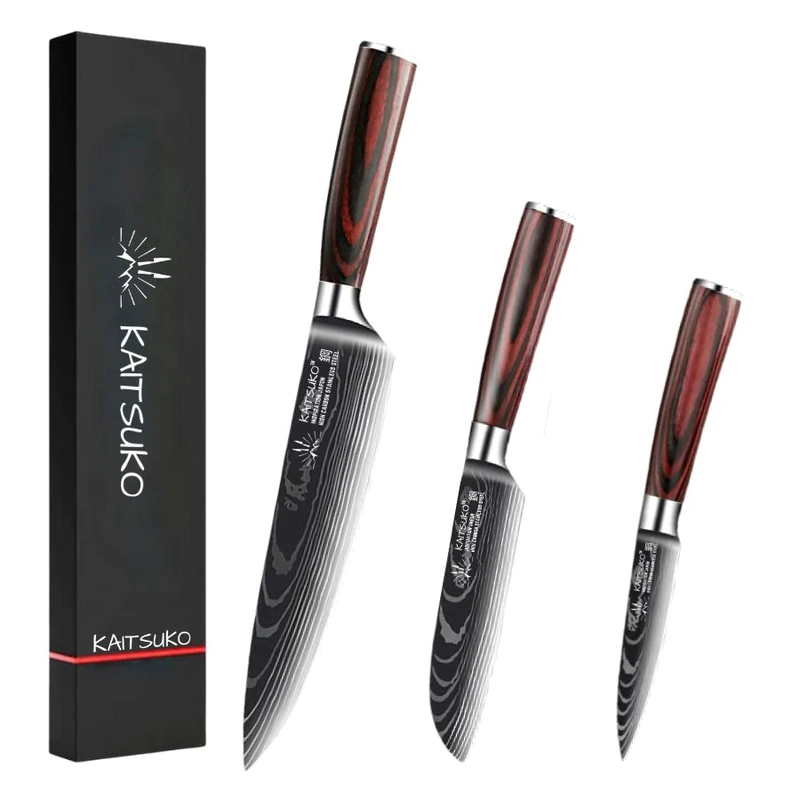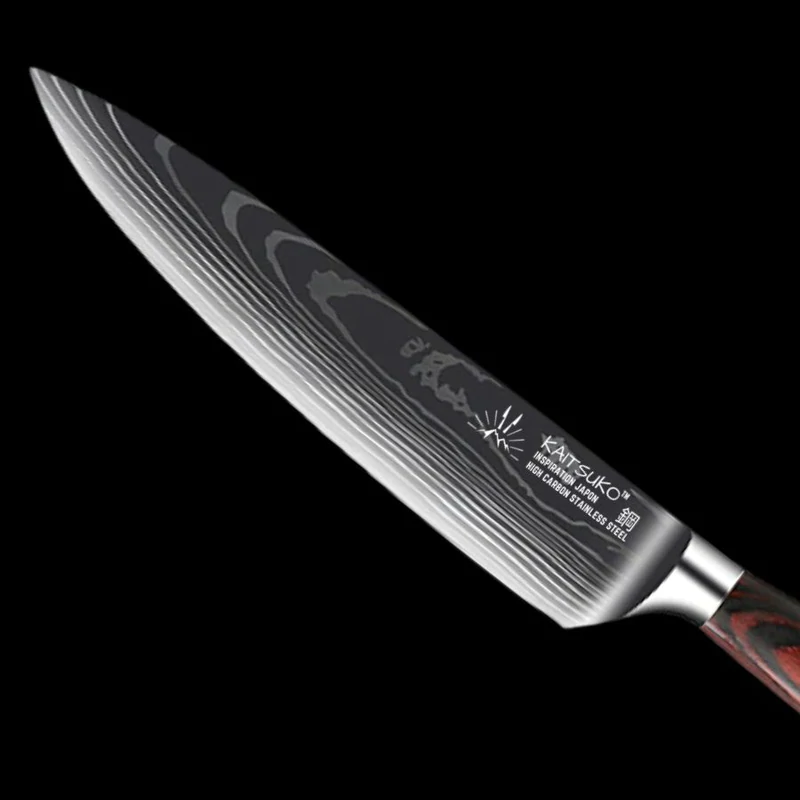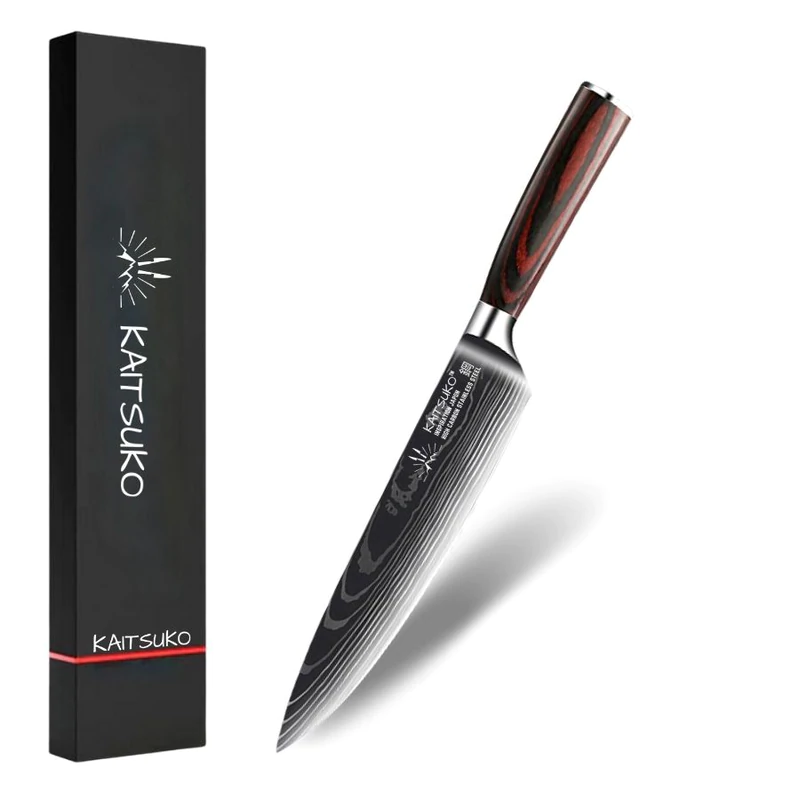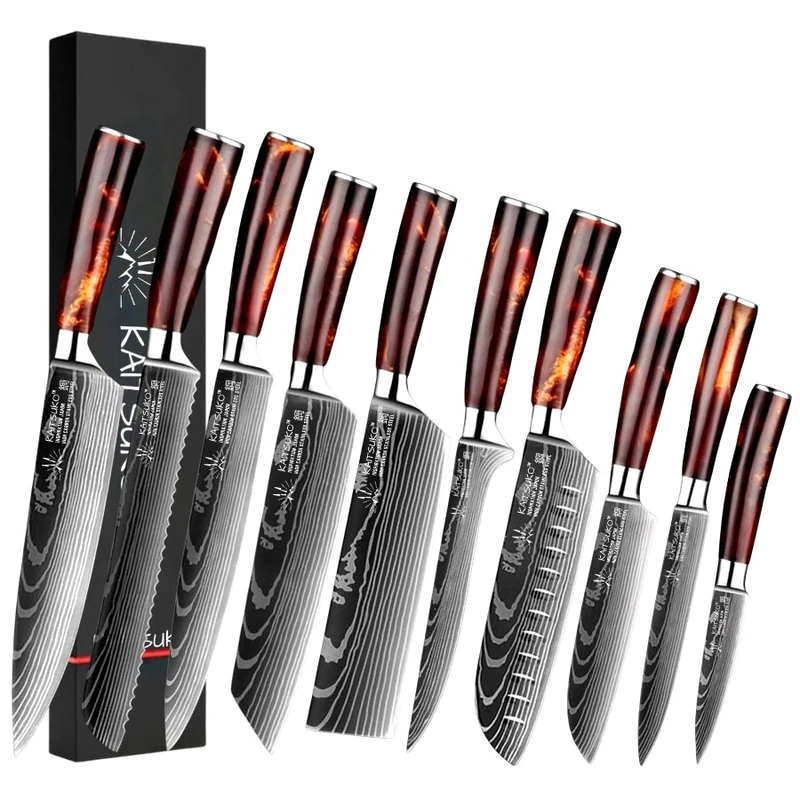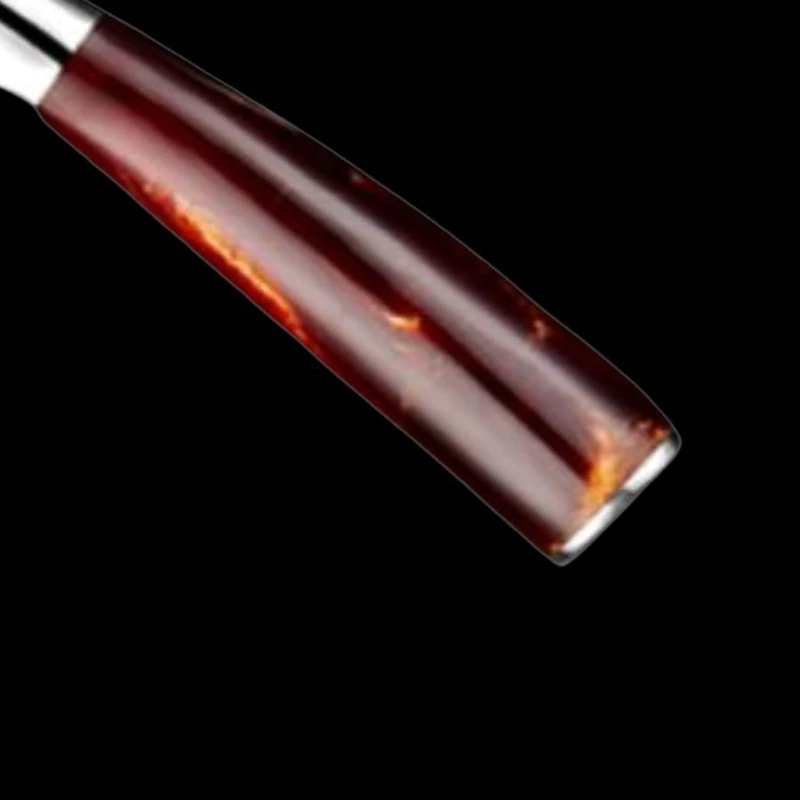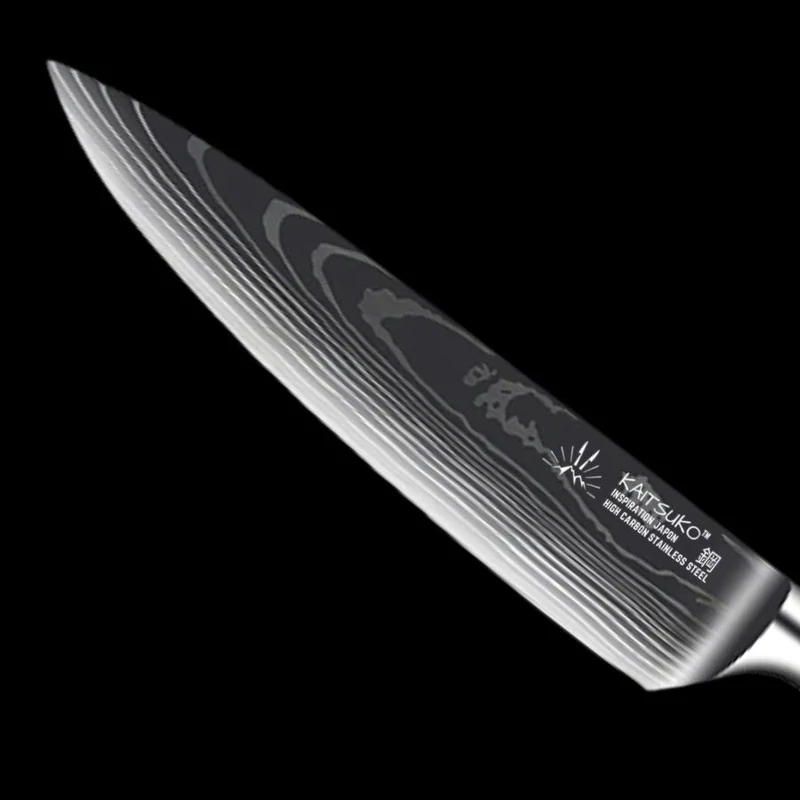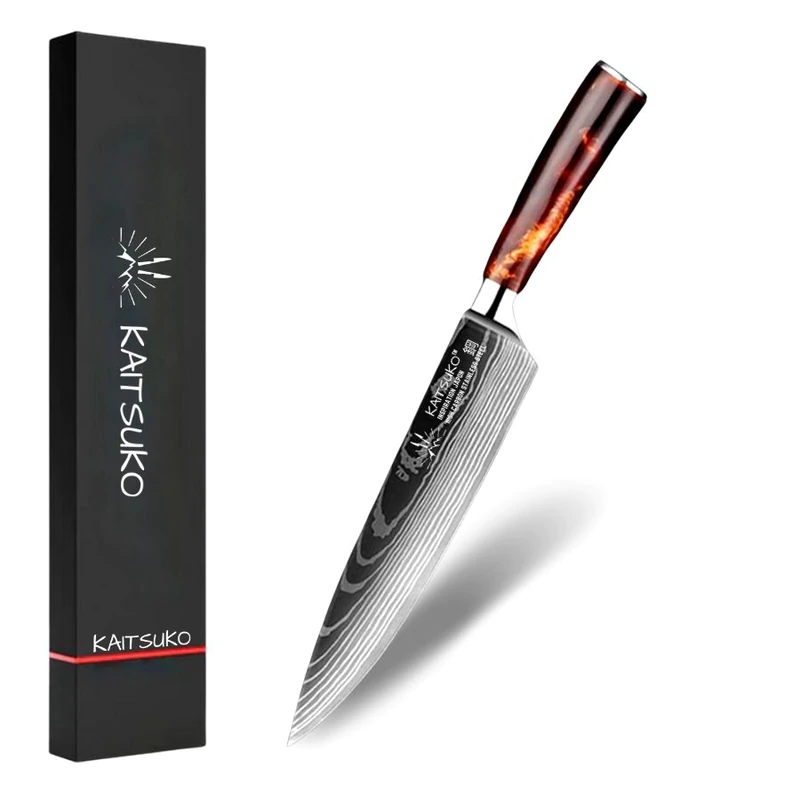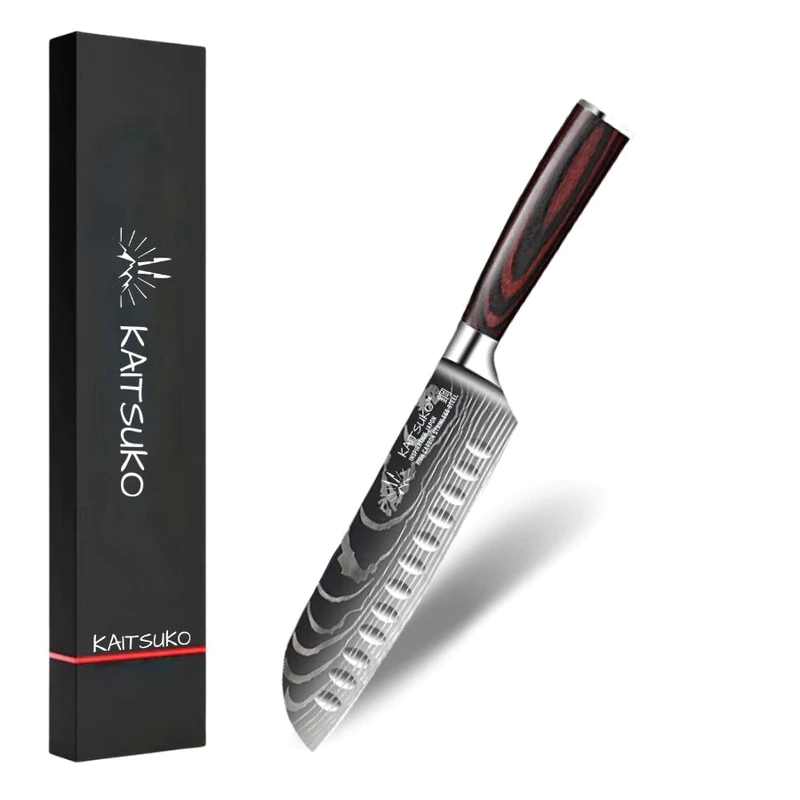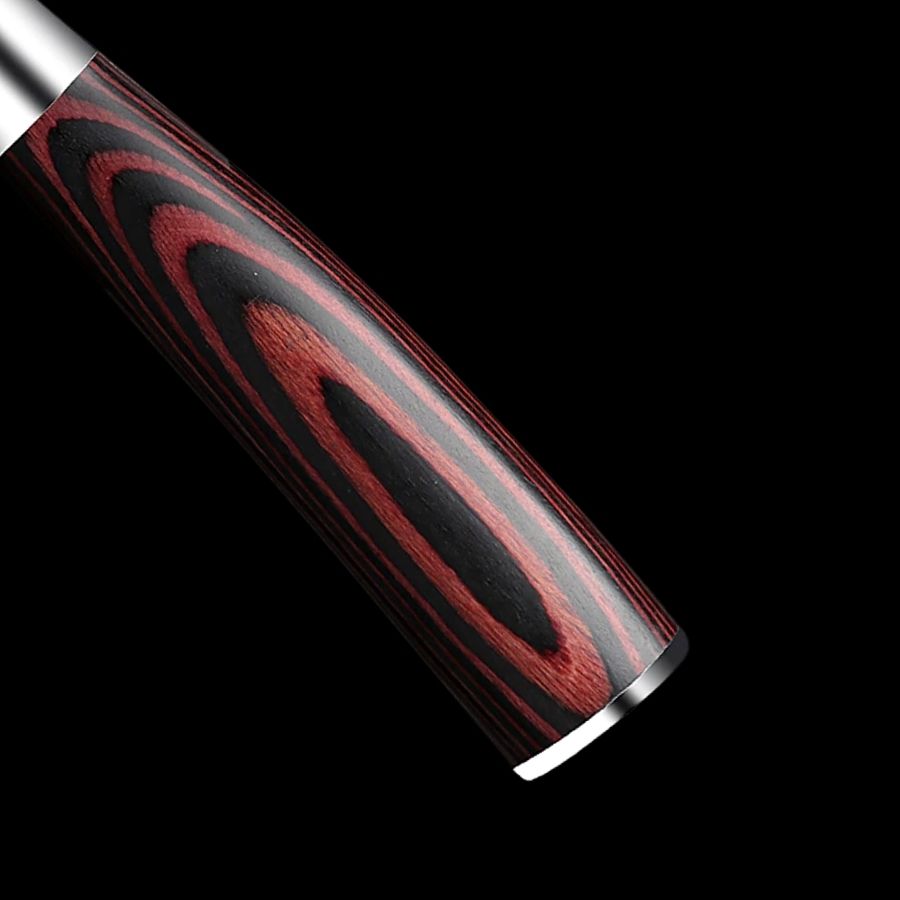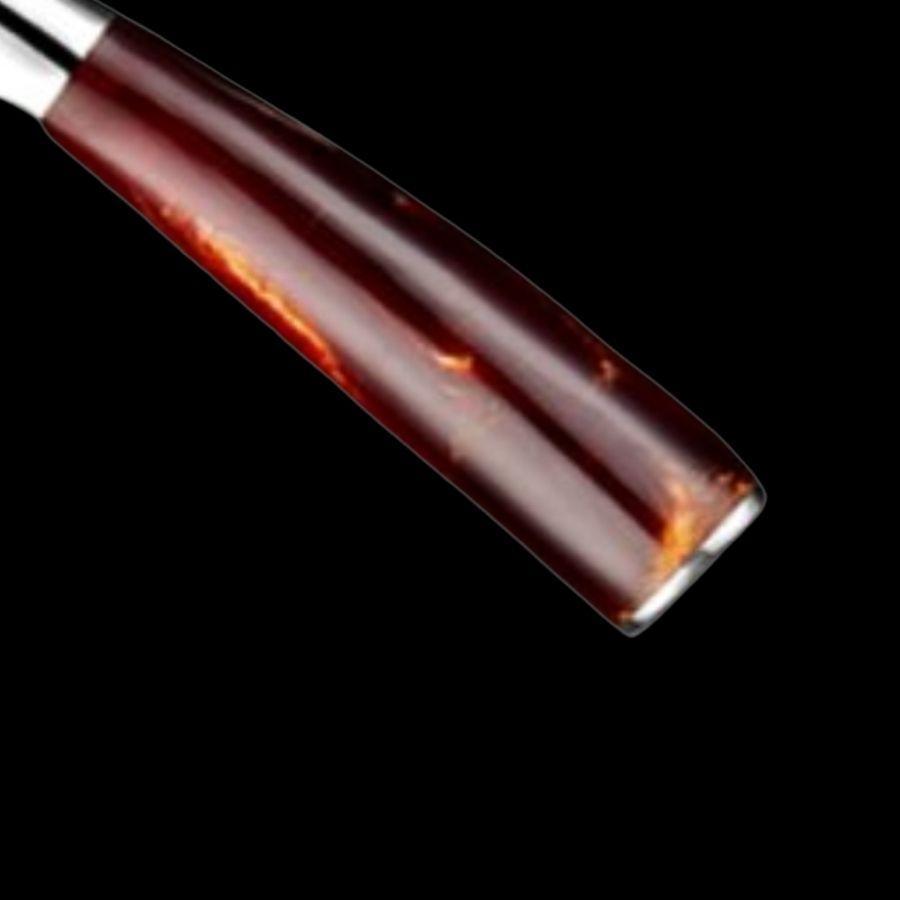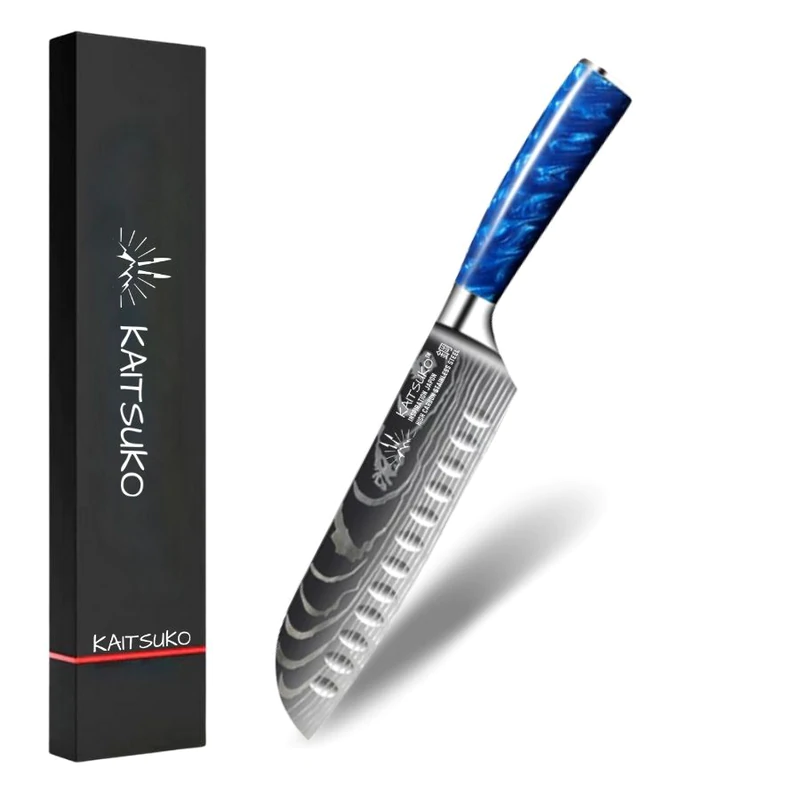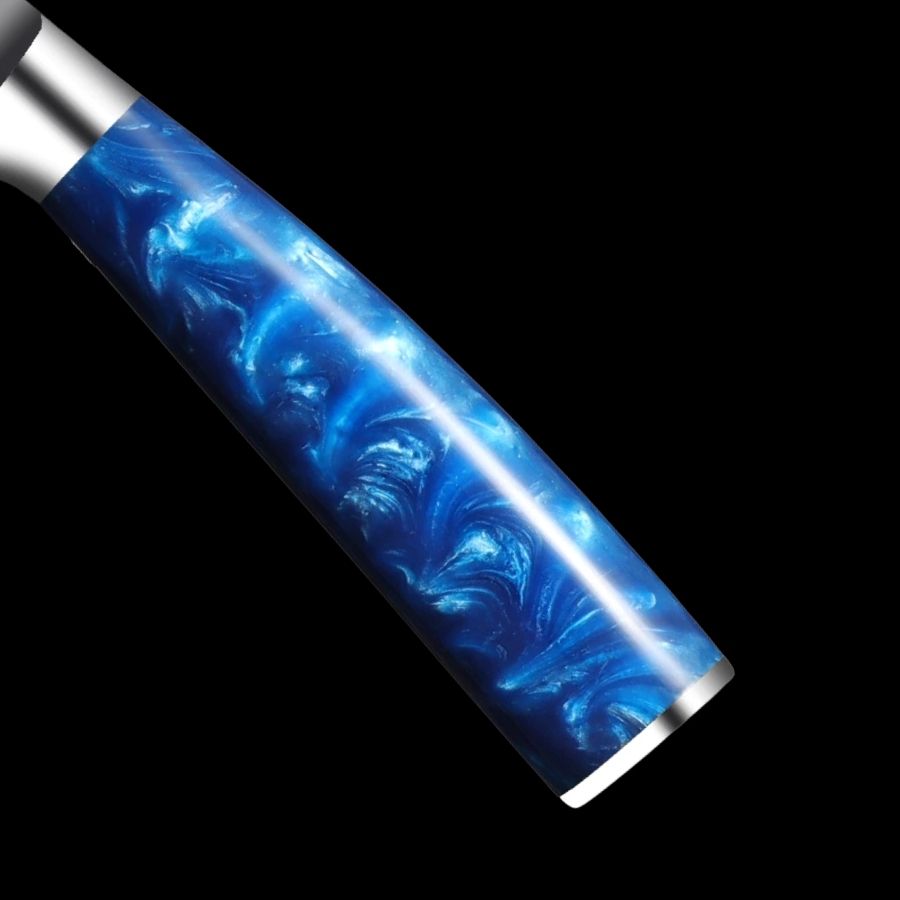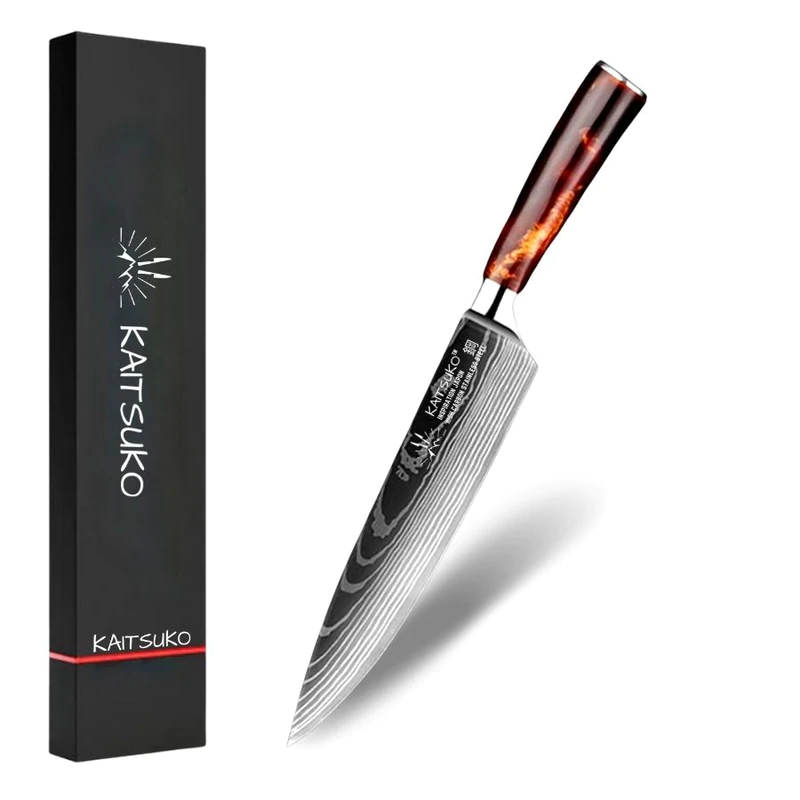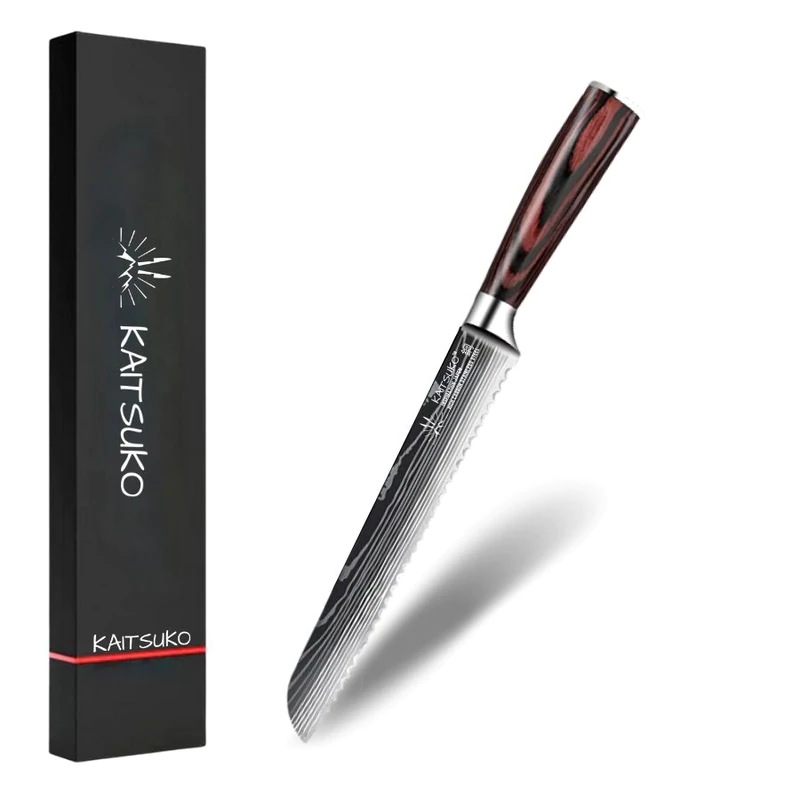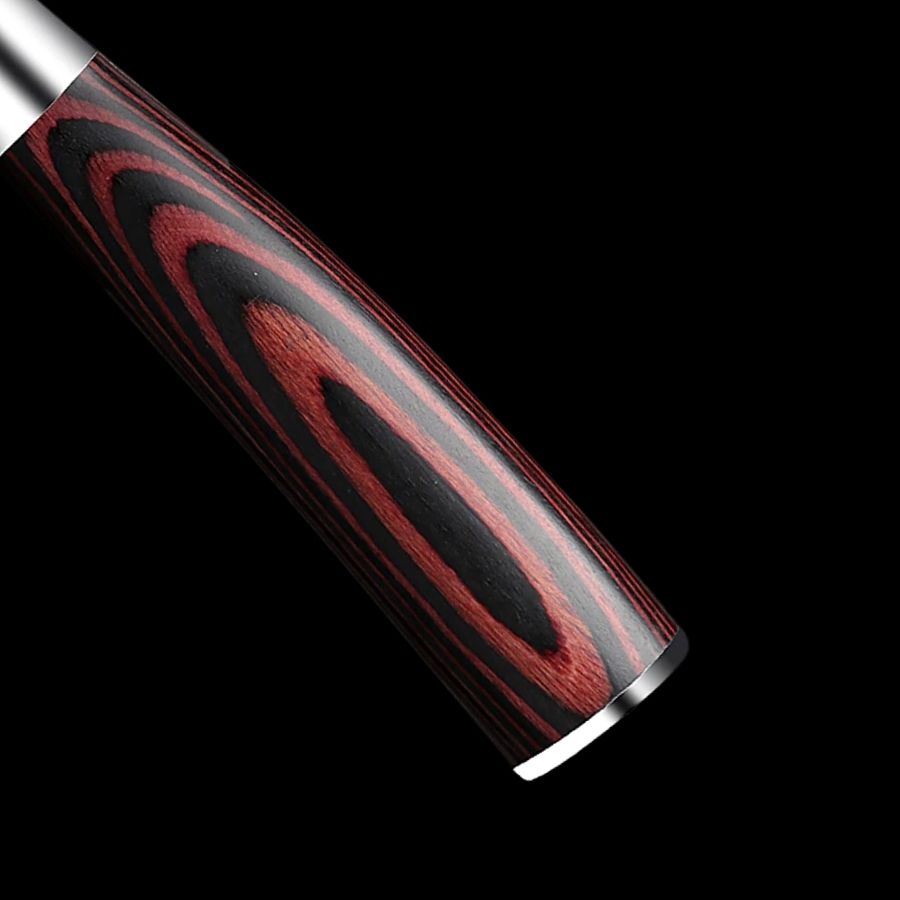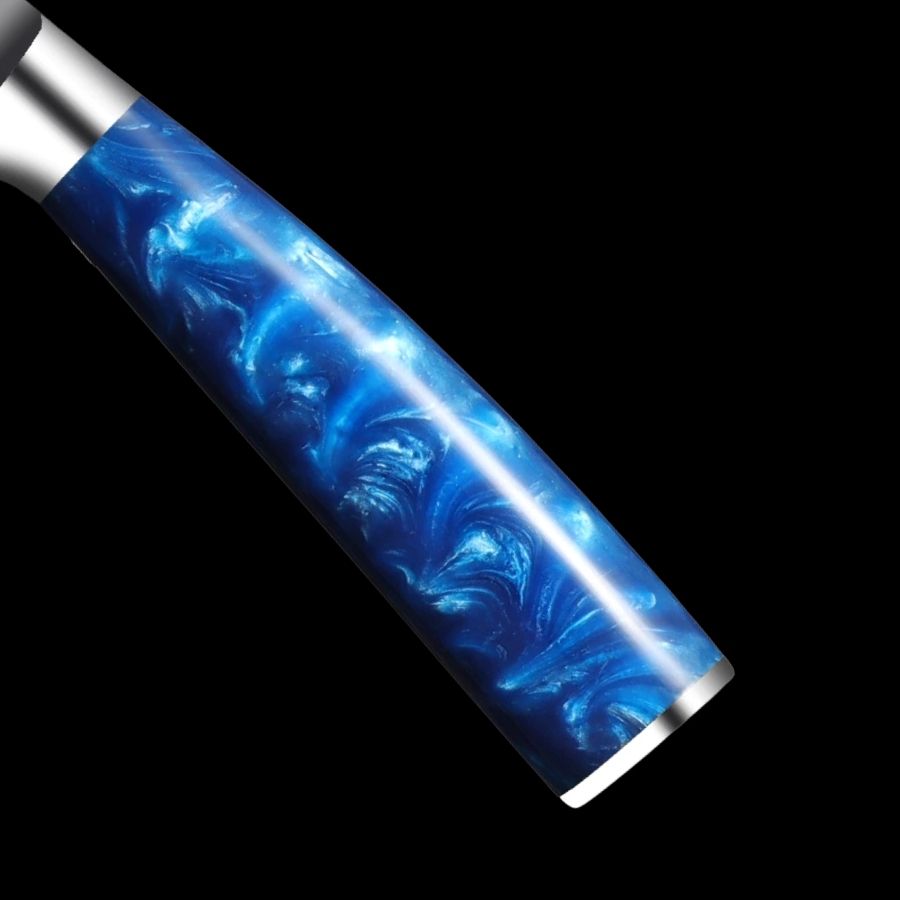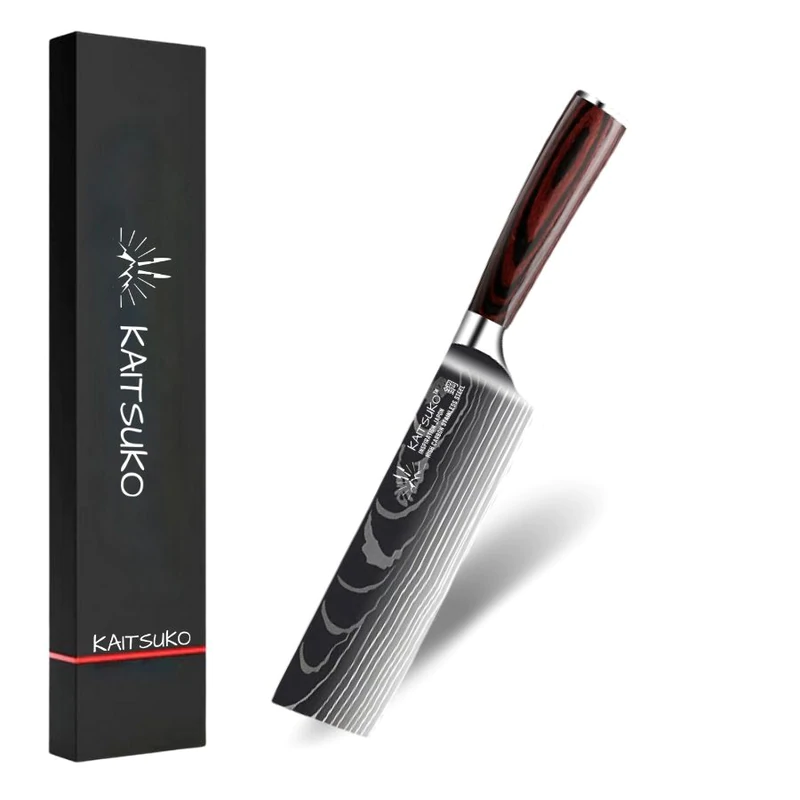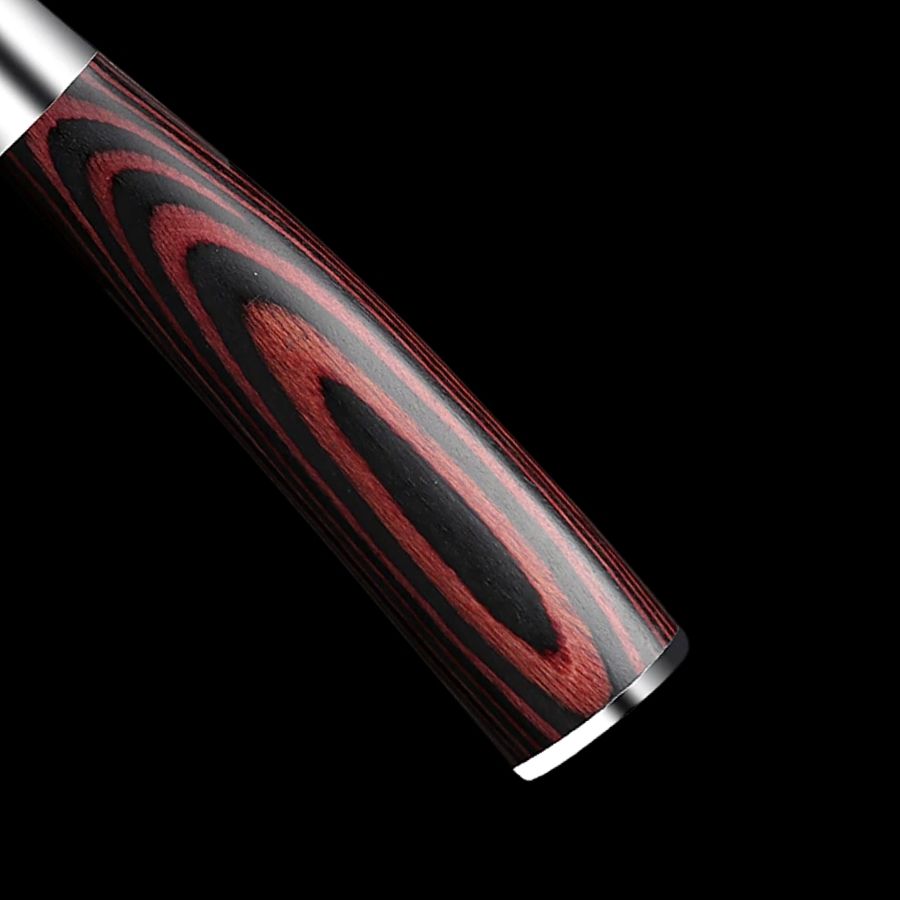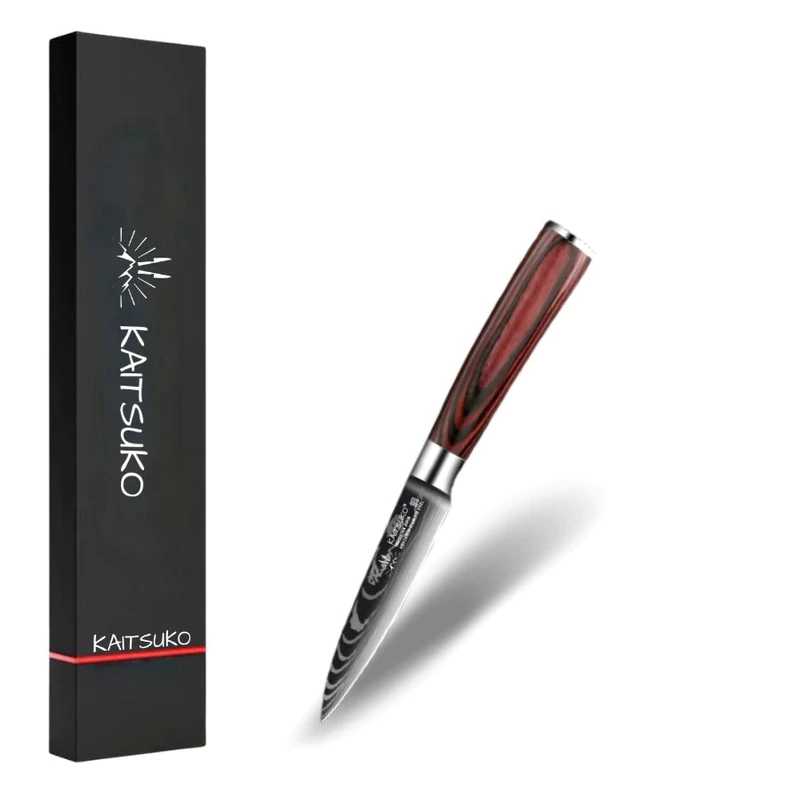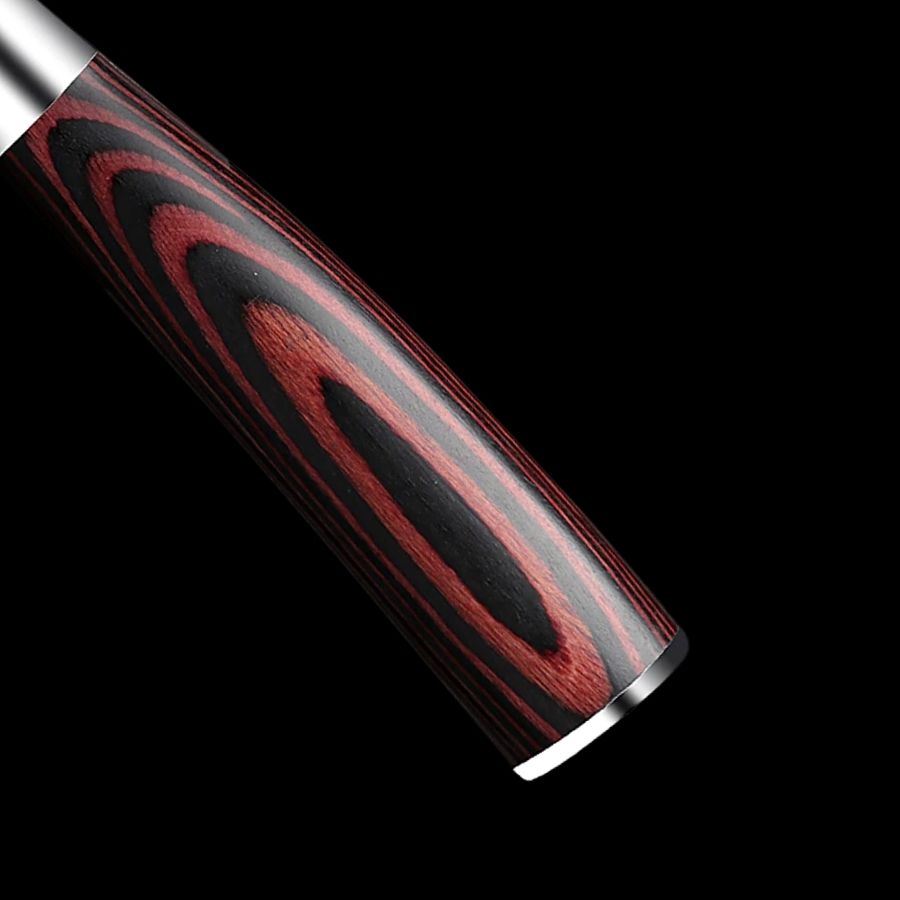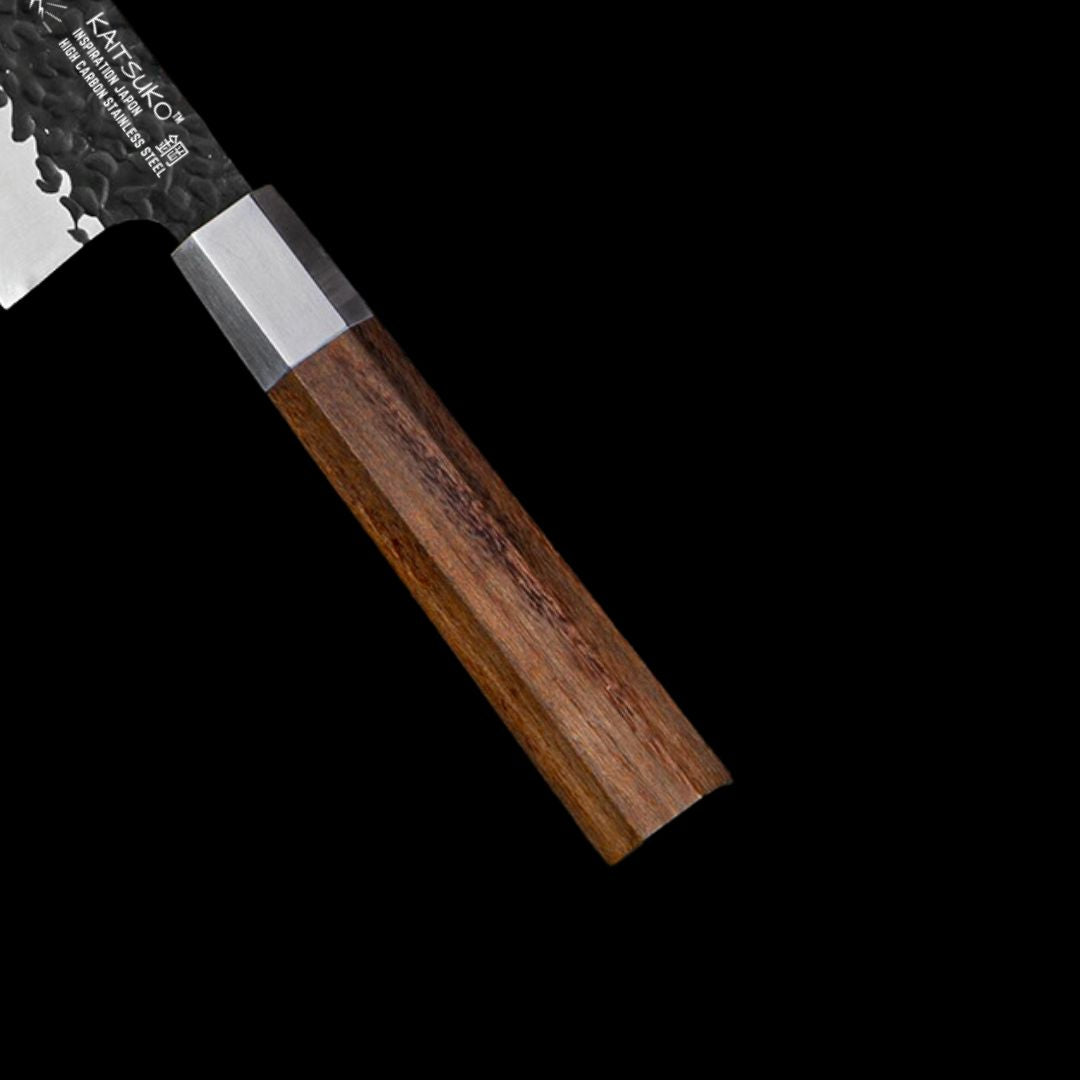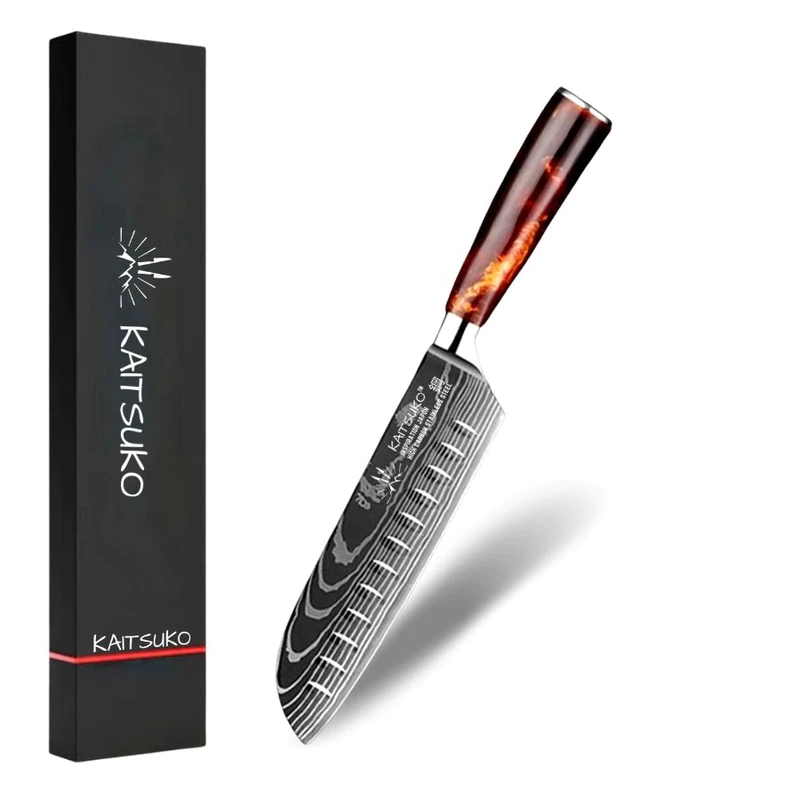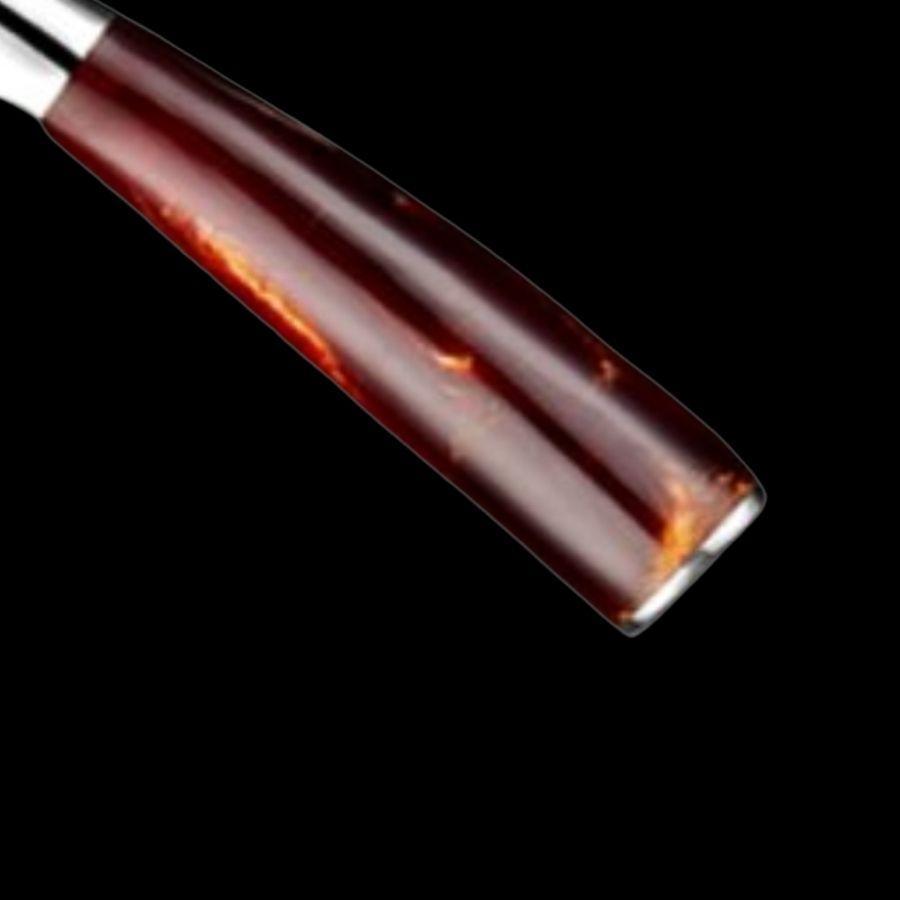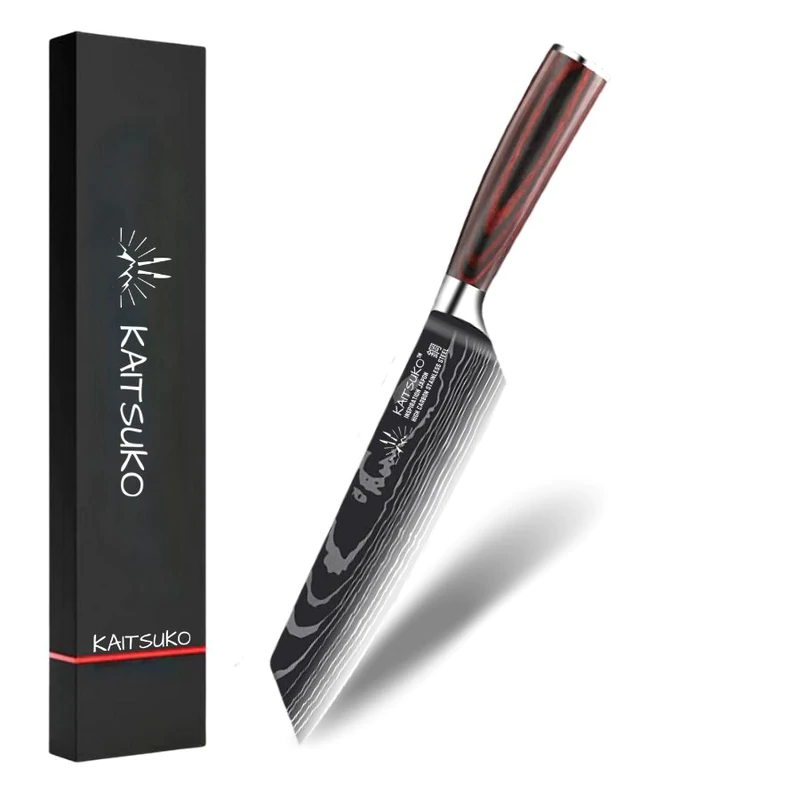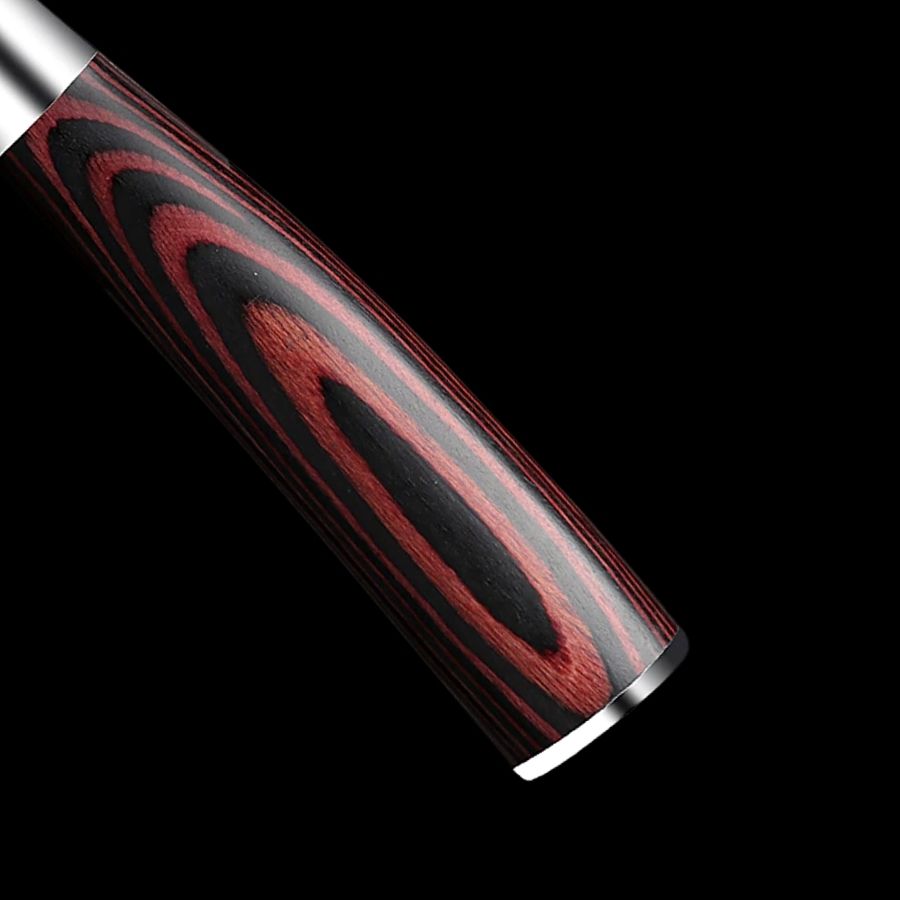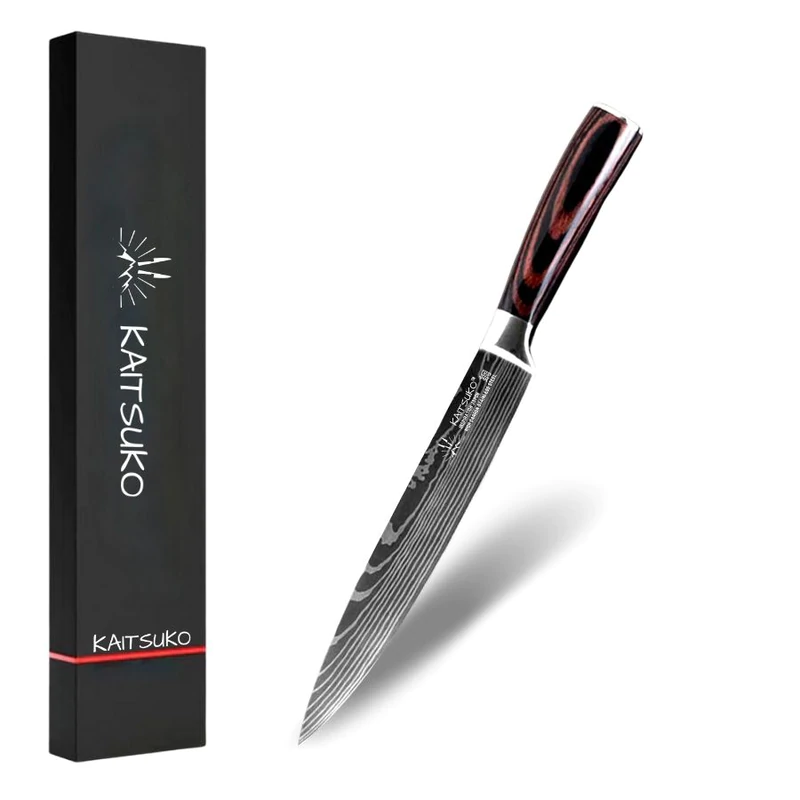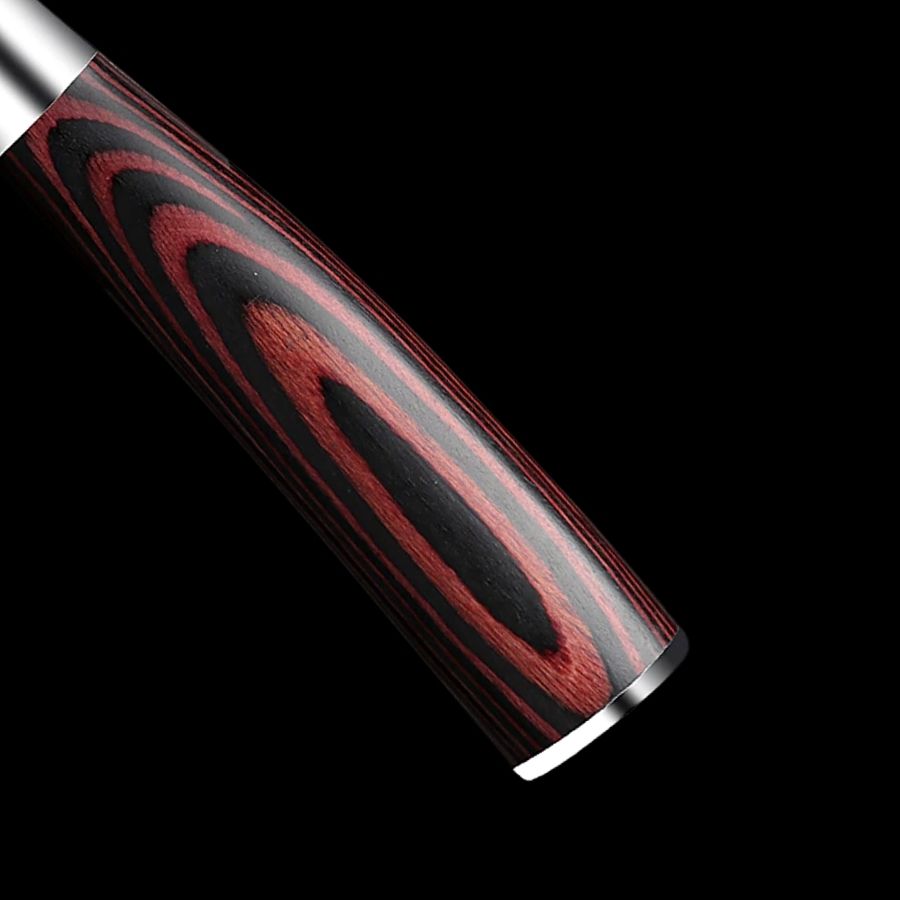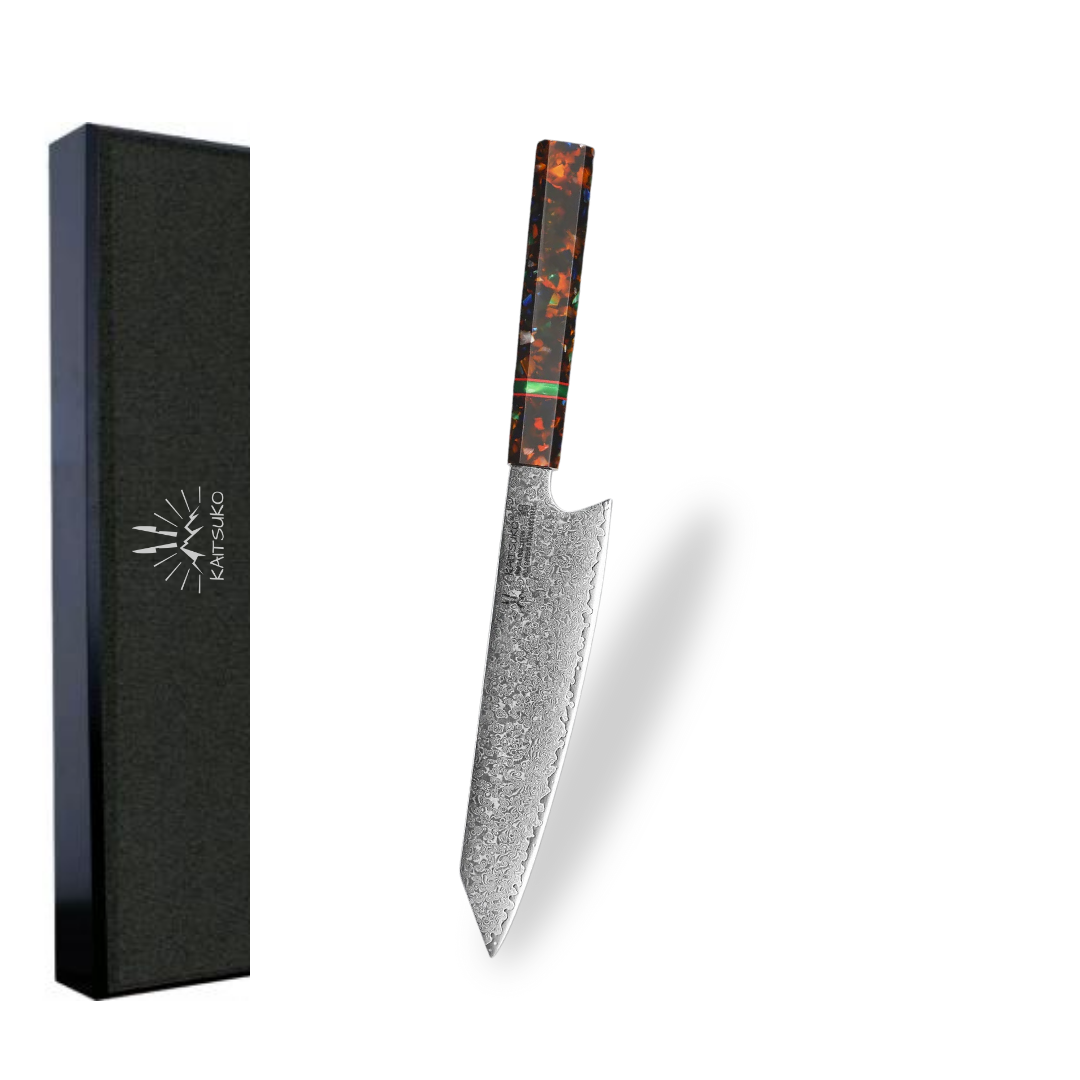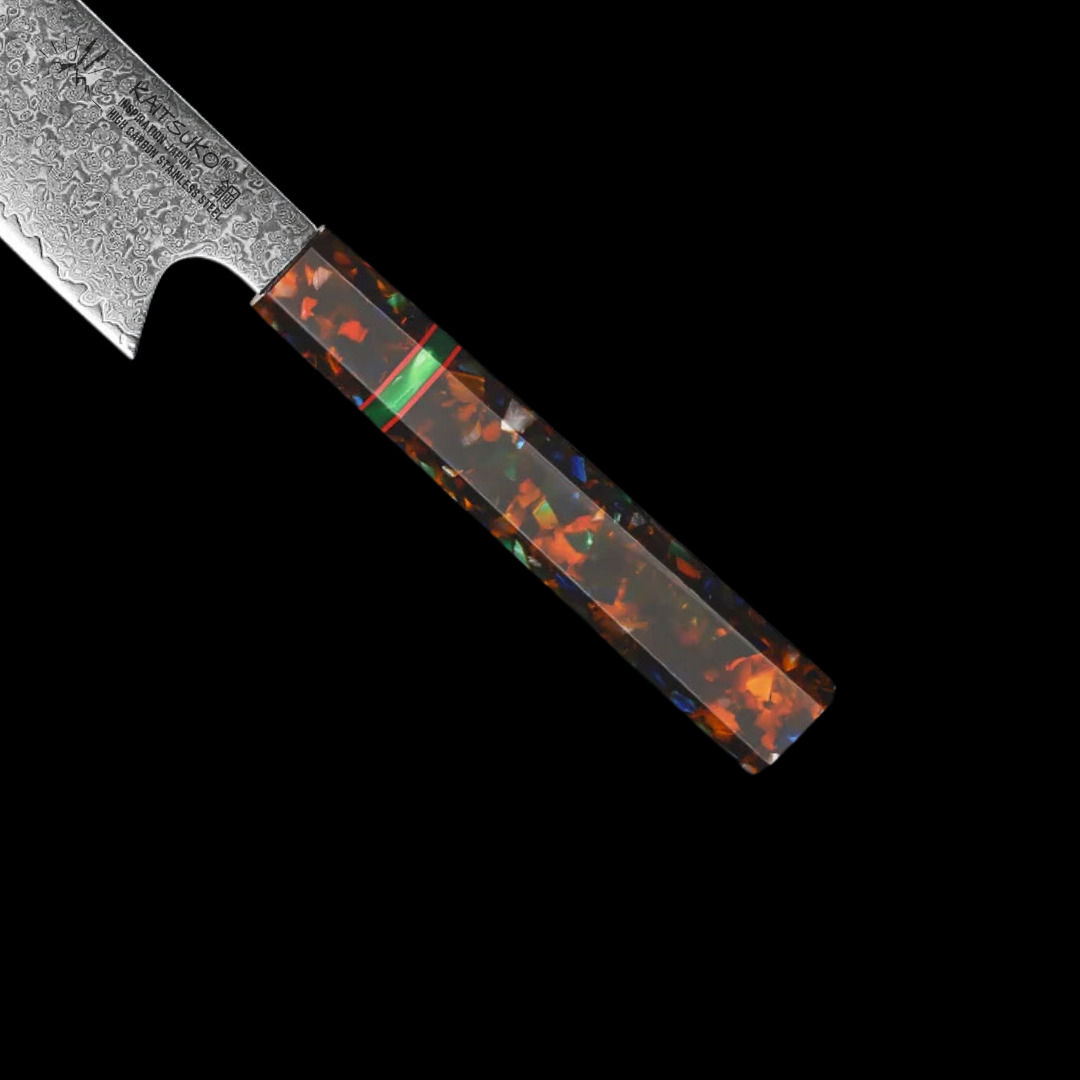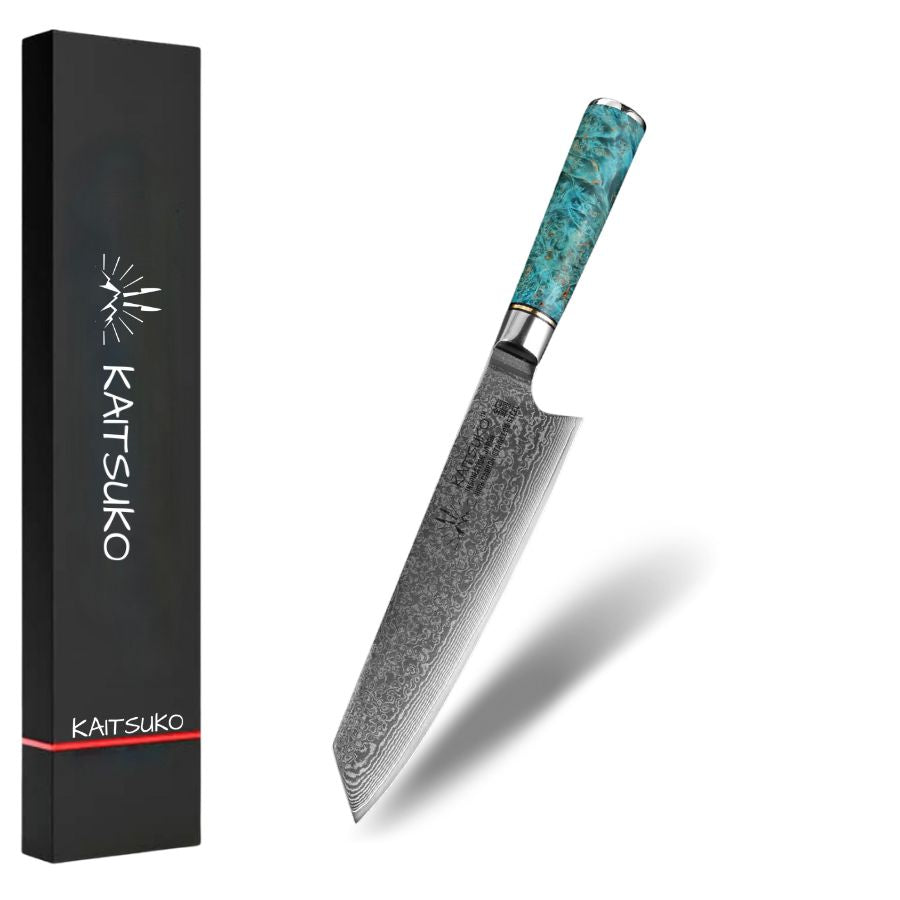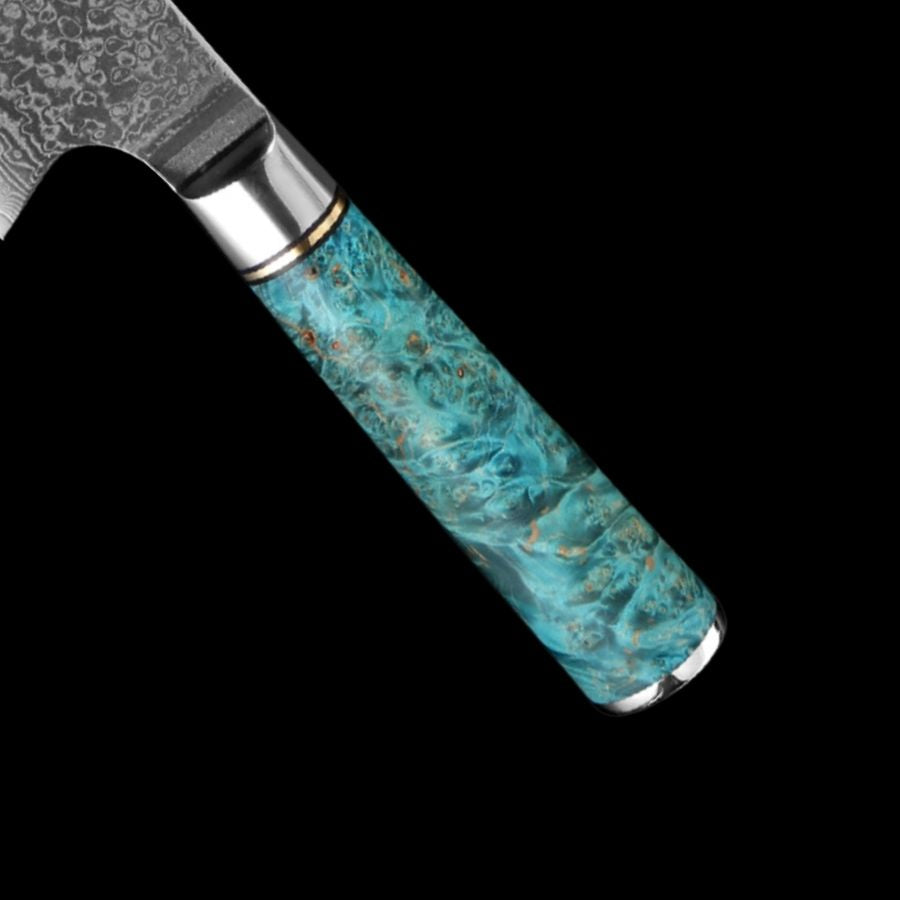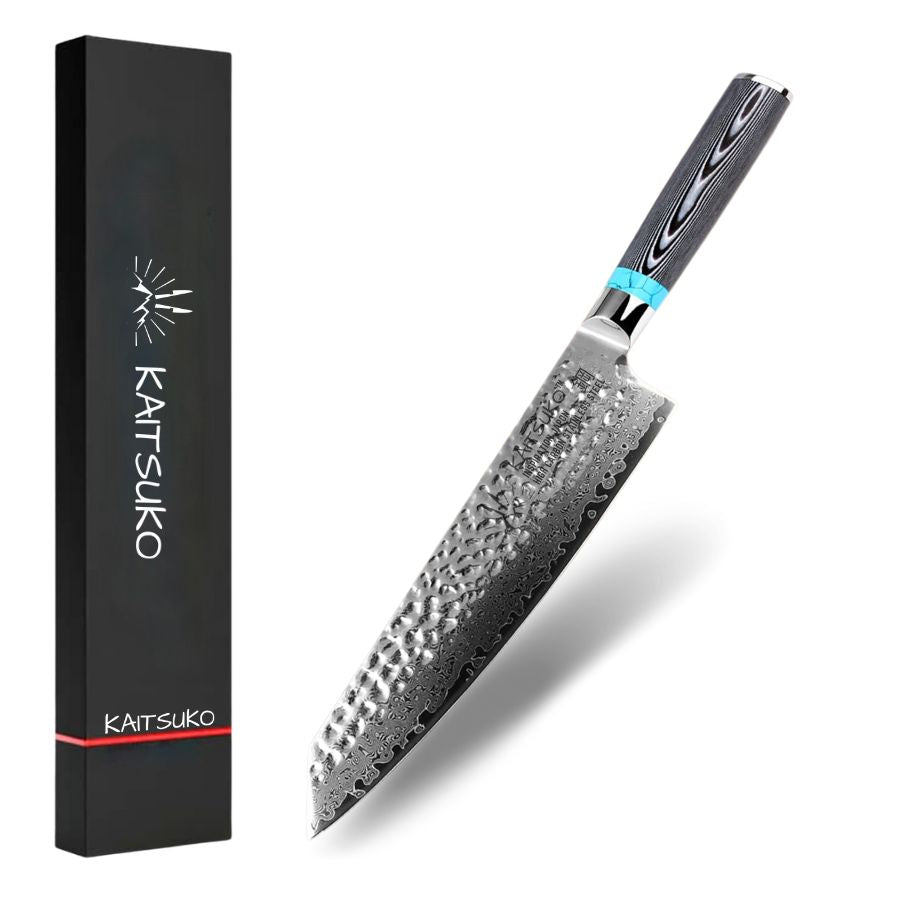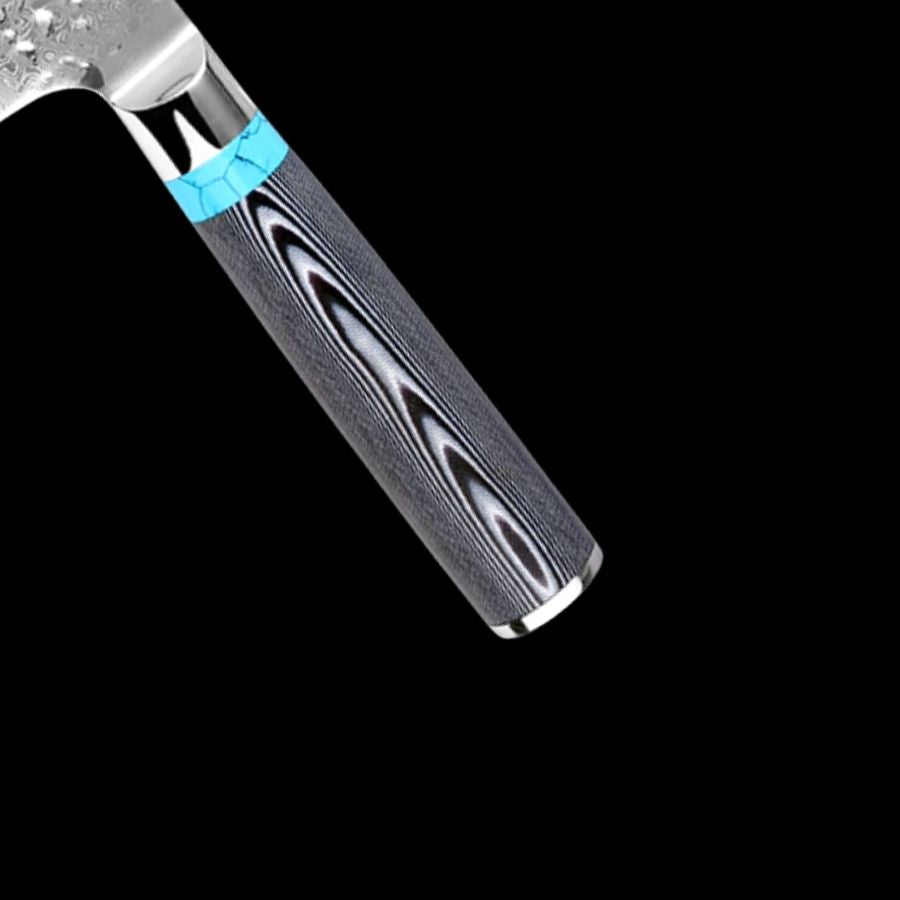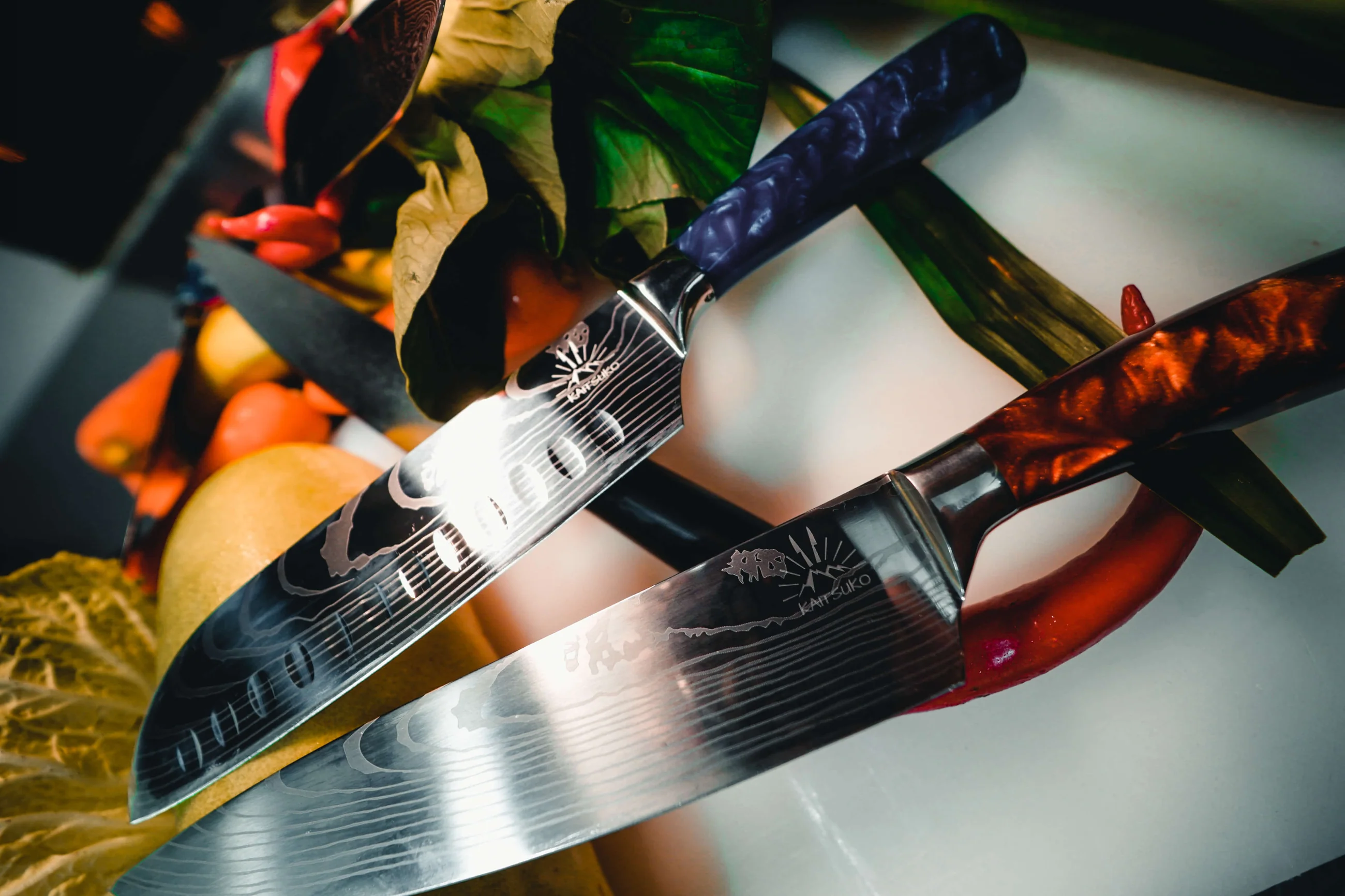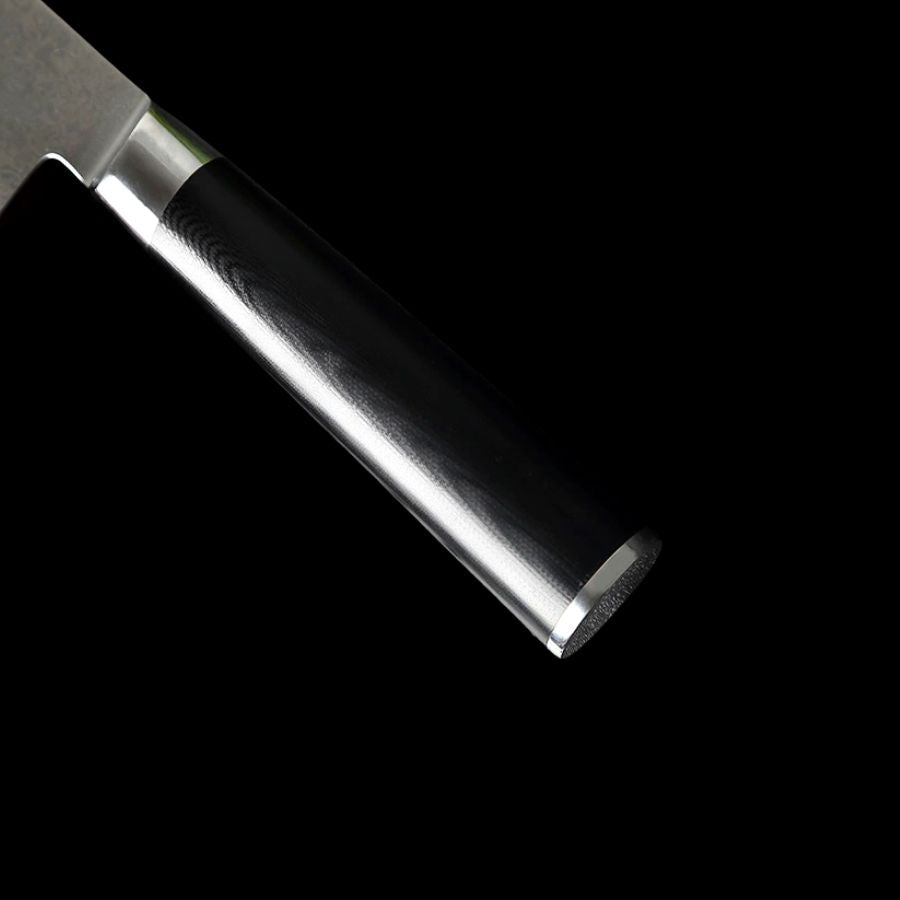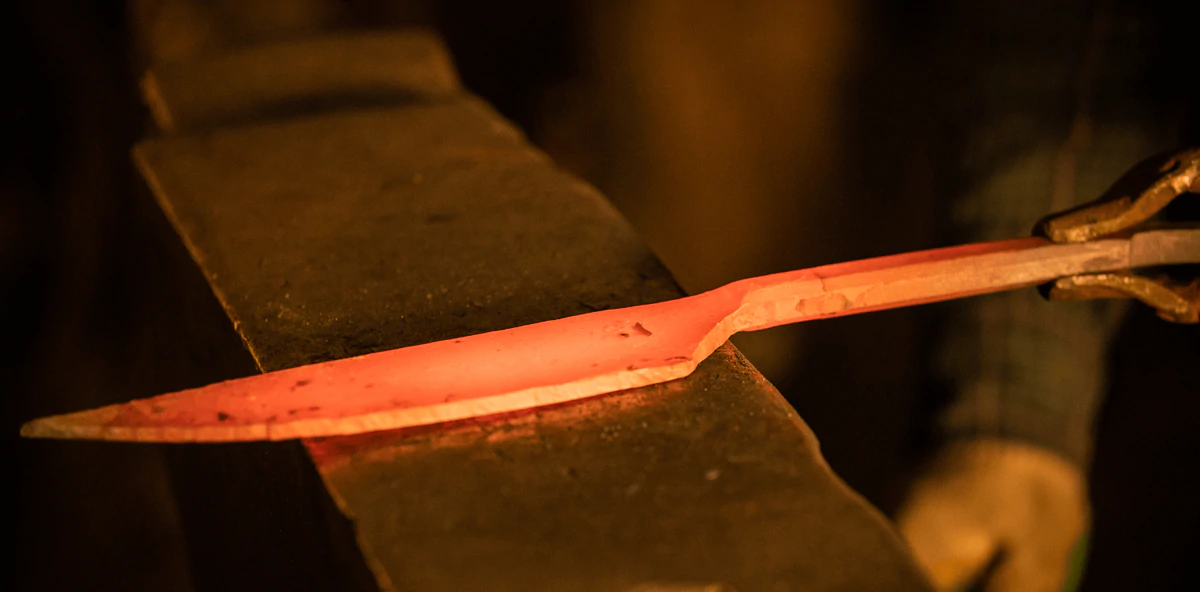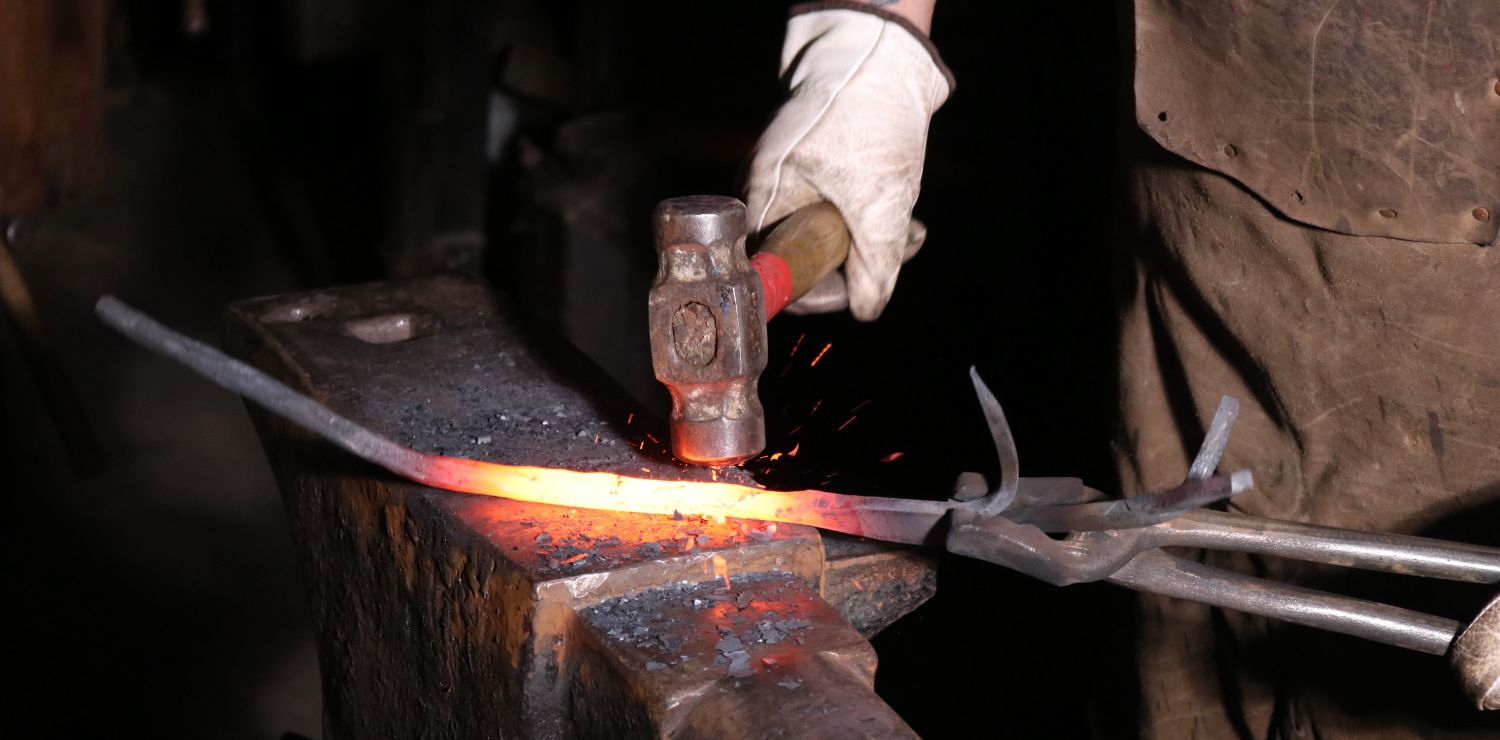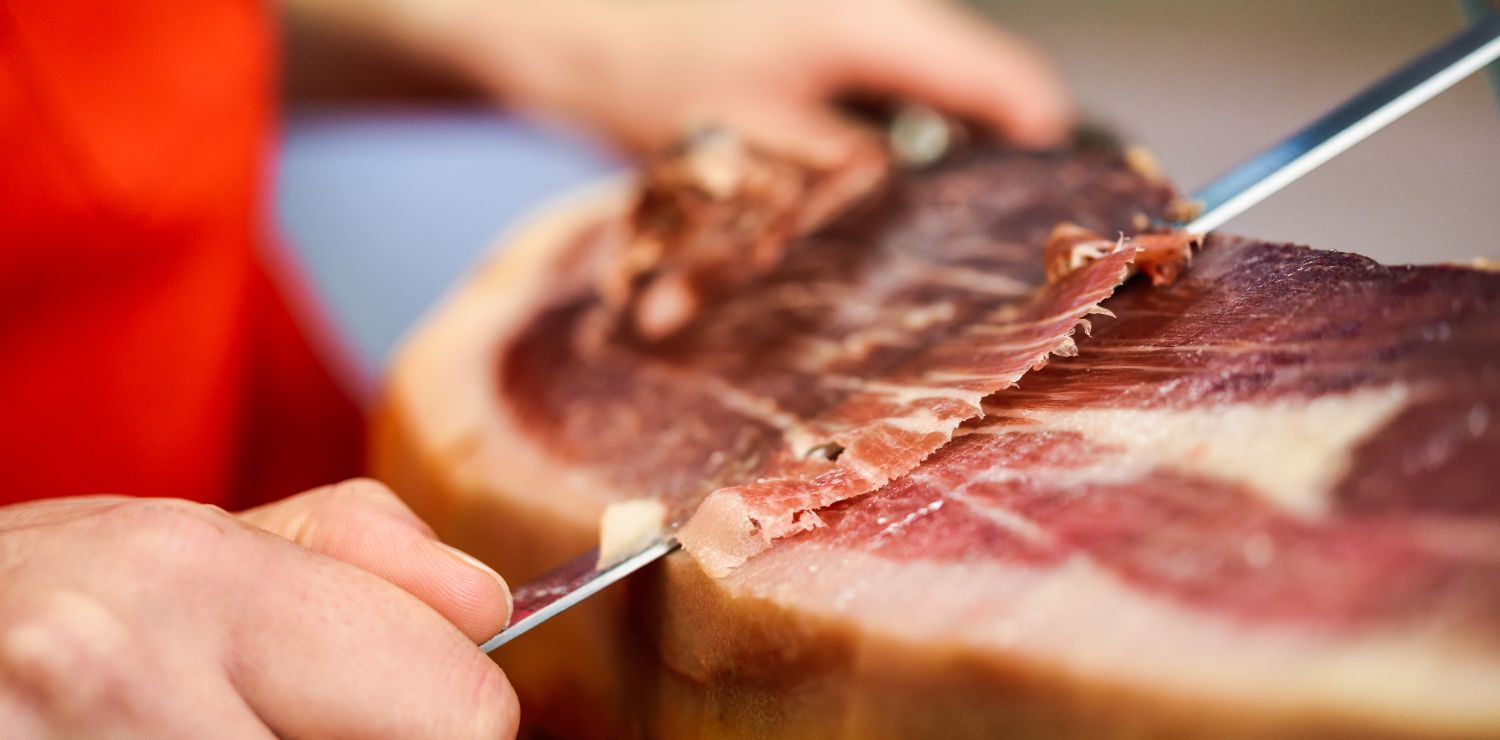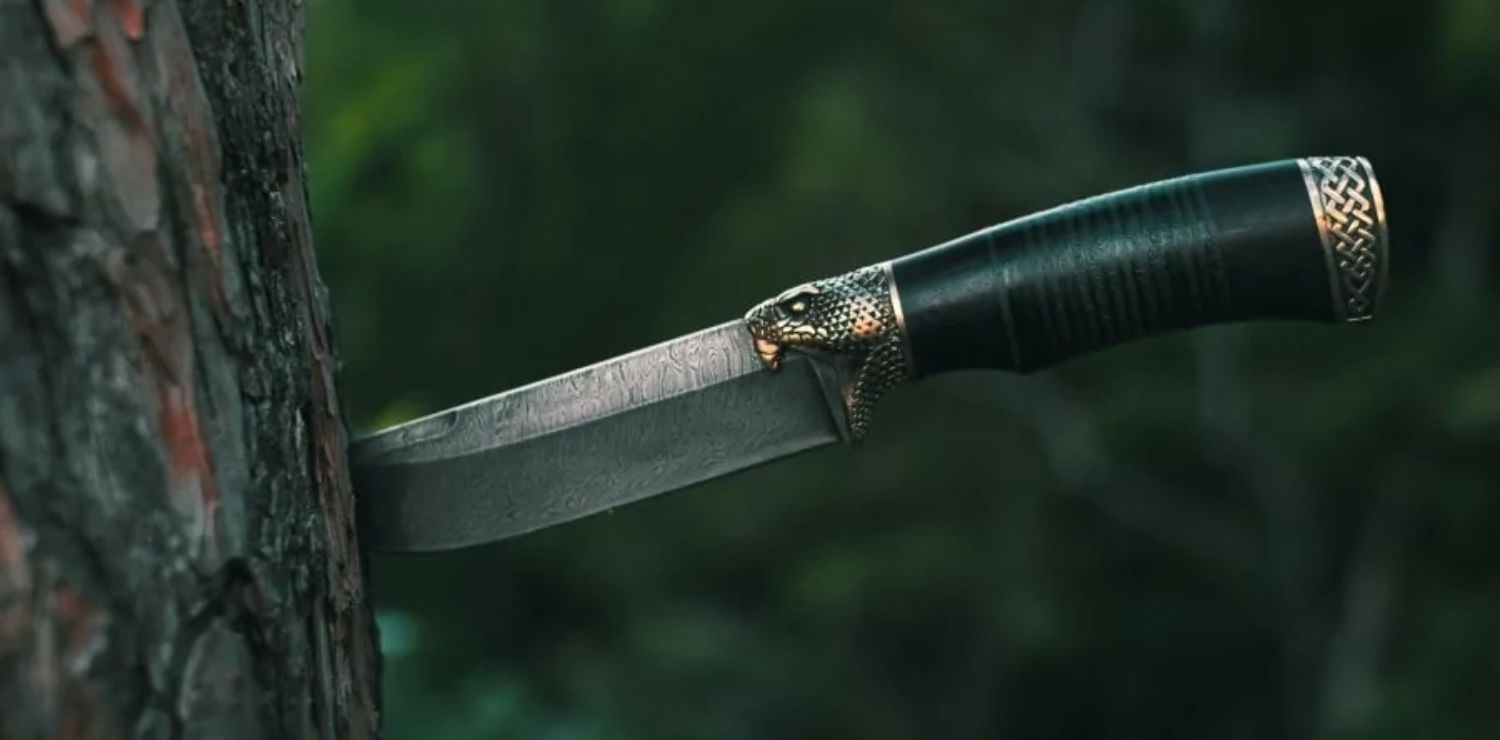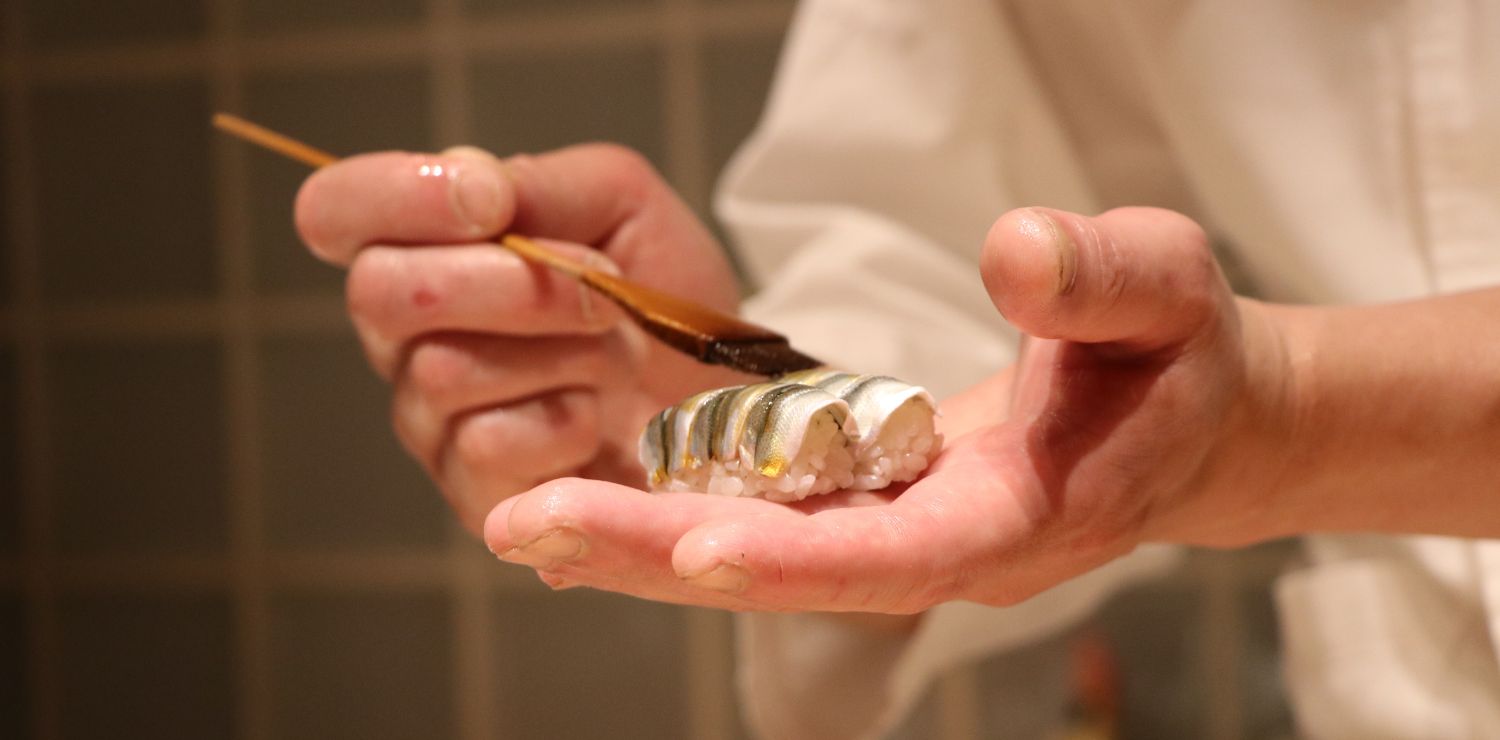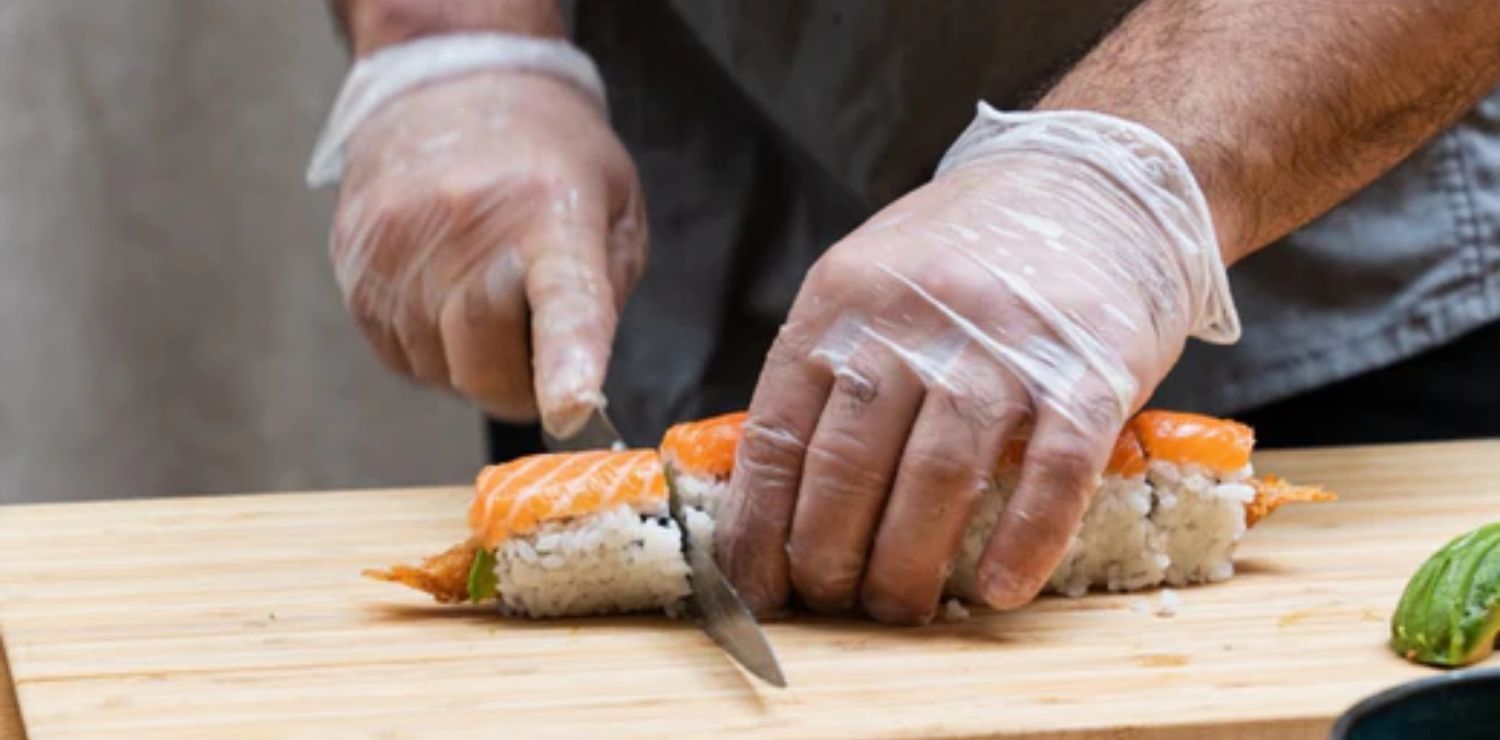Set of 5 knives, Japanese style – Collection Chef Tanaka Forest Wood
Set of 7 knives, Japanese style – Collection Chef Tanaka Land of fire
Set of 3 knives, Japanese style – Collection Chef Tanaka Land of fire
Set of 5 knives, Japanese style – Collection Chef Tanaka Land of fire
Set of 5 knives, Japanese style – Collection Chef Tanaka Blue Ocean
Set of 10 knives, Japanese style – Collection Chef Tanaka Blue Ocean
Set of 7 knives, Japanese style – Collection Chef Tanaka Forest Wood
Set of 3 knives, Japanese style – Collection Chef Tanaka Blue Ocean
Set of 10 knives, Japanese style – Collection Chef Tanaka Forest Wood
Set of 7 knives, Japanese style – Collection Chef Tanaka Blue Ocean
Set of 3 knives, Japanese style – Collection Chef Tanaka Forest Wood
Set of 10 knives, Japanese style – Collection Chef Tanaka Land of fire
OUR SPECIAL JAPANESE KNIVES
Discover our collection of top-of-the-range Japanese knives. Hand-forged from elite steels, these knives offer unrivalled sharpness and ergonomic handles for optimum comfort. Combining tradition and innovation, they are perfect for chefs and cooking enthusiasts.
Let customers speak for us
Damascus Steel Blades and its Manufacturing Techniques Worldwide
Discover the Art of Sushi: An Exploration of Japanese Flavors
The traditional craftsmanship of Japanese kitchen knives
Everything You Need to Know About Carving Knives
A Dagger or a Knife? Which is Better for a Hunter?
Exploring Culinary Delights: Starred Restaurants in Japan
The Best Japanese Knives for Fish Slicing
How to Easily Make Sushi in Just a Few Moments
LEARN MORE ABOUT JAPANESE KNIVES
THE INSPIRATION BEHIND KAITSUKO
Japanese knives, which have been popular for several decades, if not centuries, have earned a global reputation. These knives are said to be the sharpest in the world.
Initially, cutlery workshops and forges were dedicated exclusively to crafting Japanese swords. As these swords were often considered weapons, their production was eventually halted. The artisans and blacksmiths then shifted their focus to the culinary sector, specializing exclusively in knife making. Each Japanese knife is unique and designed for specific purposes.
Japanese knives can be crafted from various materials. However, Damascus steel undeniably stands out among the different types of steel. Its sharpness and durability are well-known, and it is also renowned for producing the most beautiful blades in the world. This steel is highly valued by many chefs for its unmatched appearance and performance.
Damascus steel knives are made from two or more different types of steel. Originally, Damascus steel was manufactured in India or Uzbekistan. Artisans initially used an Indian steel known as Wootz, which had a high carbon content. These blades were primarily used to create weapons and swords. The production of Damascus swords began around 300 BCE and continued until the late 1750s. After the depletion of Wootz, the traditional craft somewhat faded. It wasn't until the 19th century that blacksmiths began to revisit this technique. In the 1820s, a new manufacturing process was discovered. The artisanal forging technique involves combining two or three different steels. They are then fire-welded through hammering to form a solid block. The blacksmith then reheats the block to stretch and fold it upon itself, and it is welded again. These operations can be repeated endlessly, allowing the blacksmith to create hundreds of layers and achieve stunning and unique patterns. The heating temperatures can reach up to 1300-1400°C. As you can see, the characteristics of Damascus steel are rooted in its strength and originality.
To best meet your needs, Kaitsuko offers unique and original knives that incorporate these different manufacturing techniques. Our collections and engravings are one-of-a-kind. We are proud not only to offer you high-quality products but also to provide express delivery within 24 to 48 hours. We are here to assist you with any purchase inquiries.

